Cada cosa es Babel
November 4, 2023 – February 10, 2024
Mendes Wood DM, Brussels, Belgium

from the series Cada cosa es Babel 3, 2023
unique print on handmade paper 56.5 x 76.5 cm
“And what happens if we look the other way around, if we read contemporary art as future archaeology?”
— Mariana Castillo Deball
An object, eroded by time, crumbles in the palm of a hand. A tower collapses. A stonemason is hammering, chiseling stones. In her second solo exhibition at Mendes Wood Brussels, Cada cosa es Babel, Mariana Castillo Deball shows a selection of linocut prints on handmade paper, made in collaboration with paper producer Gangolf Ulbricht and printed at Keystone Editions, both in Berlin. For this series, the artist started by drawing deconstructed fragments of existing imagery of the tower of Babel – details from seventeenth-century engravings and the paintings of Pieter Bruegel the Elder, among others – and remixing these elements into new constellations that make up new layers of stories. As the title of the exhibition suggests: everything is Babel; everything tells a story and leaves a mark, even, or indeed precisely, where it fails and crumbles, leaving behind its origins.
“And it came to pass, as they journeyed from the east, that they found a plain in the land of Shinar; and they dwelt there. And they said one to another, Go to, let us make brick, and burn them thoroughly (…) And they said, Go to, let us build us a city and a tower, whose top may reach unto heaven; and let us make a name, lest we be scattered abroad upon the face of the whole earth” [11:2-4]. This marks the beginning of the story of Babel in the book of Genesis in the Christian Old Testament. The construction of the tower was cut short when god created a confusion of tongues – the multiplication of languages. Some scholars and historians have asked at which point this story begins to make sense to us as a story: in the plotlessness of a universal language, efficiently progressing towards a unified goal, or in its turn of plot, when people stop making sense to each other as they speak, suddenly, in different tongues?1 One interpretation of the story is that Babel has “made its name”, not in spite of the divine spell but because of it. The Hebrew name Babel (בבל) derives from the verb balal, which means to confuse or confound. The Arabic noun بَلْبَلة or balbala refers to disorder, confusion, and chaos.2 It may be the case that the English word babble has its origins in the word Babel, although it could also be an onomatopoeia for the sound that babies make before acquiring linguistic abilities. In either case, Babel, or babble, is what comes before and after a universal language that is set to unite people on earth with the divine knowledge of the heavens.
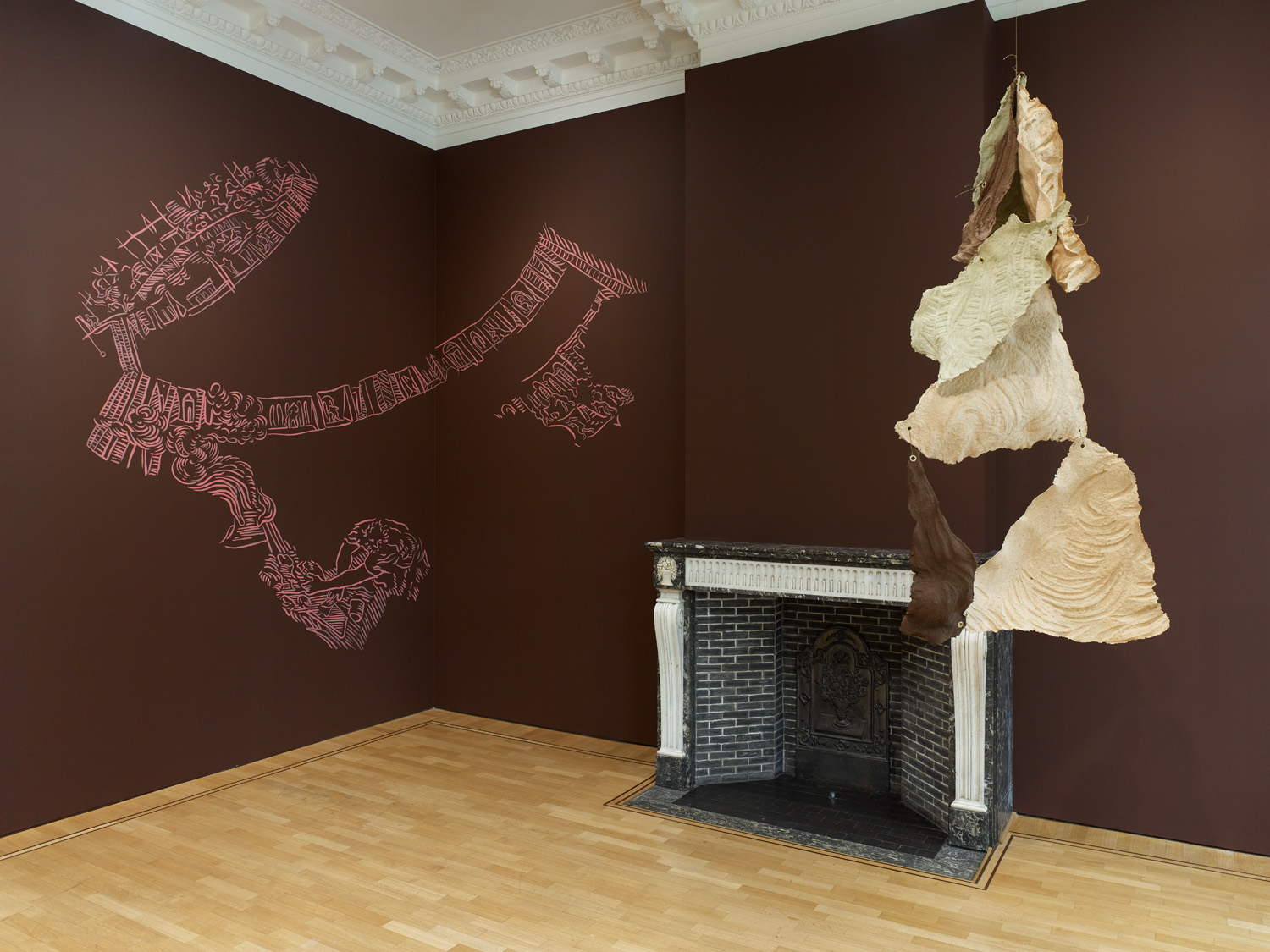
Exhibition view of: Cada cosa es Babel, Mendes Wood DM Brussel, Belgium, 2023
Photo: Kristien Daem
Jacques Derrida writes that “[t]he ‘tower of Babel’ does not merely figure the irreducible multiplicity of tongues; it exhibits an incompletion, the impossibility of finishing, of totalizing, of saturating, of completing something on the order of edification, architectural construction, system, and architectonics.”3 In a recent text in Ixiptla, a research journal edited by Mariana Castillo Deball, she writes that the forum of ancient Greek society is both a physical space and the people who gather in it.4 Something similar can be said about the tower of Babel. It is both architecture and the materialization of a monolithic language, or what such language strives to achieve: the utopian project of absolute (heavenly) knowledge, which is bound to fail. And Babel, as Derrida points out, is also the failure itself, which signifies the event in its trace. Babel in ruins. This failure is told through the scattering of people in different directions “upon the face of the whole earth”, and this scattering also finds its visual echo in the works shown in this exhibition.
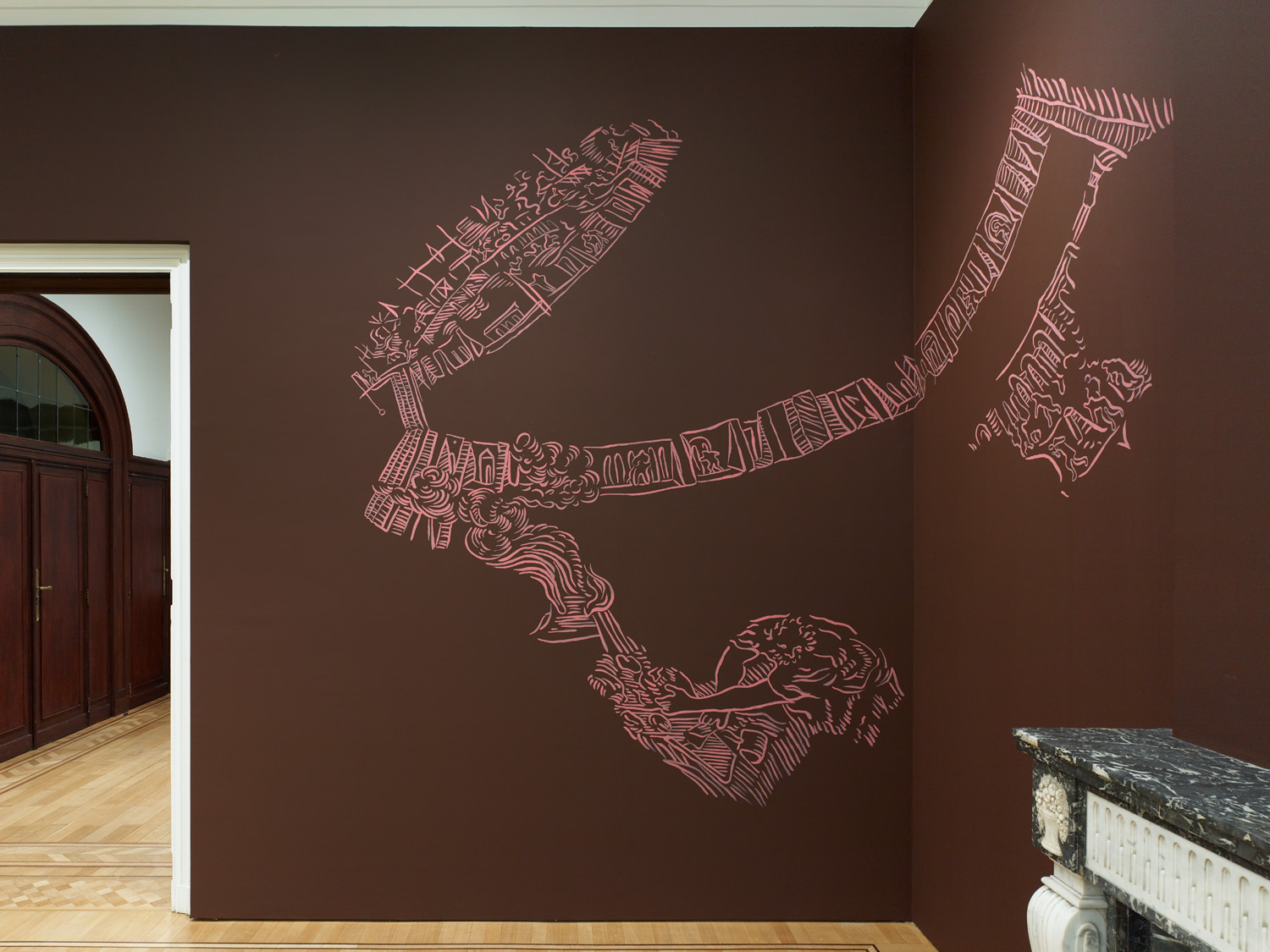
a story, a building, and a ruin, 2023
acrylic paint variable dimensions (MW.MCD.145)
Photo: Kristien Daemv
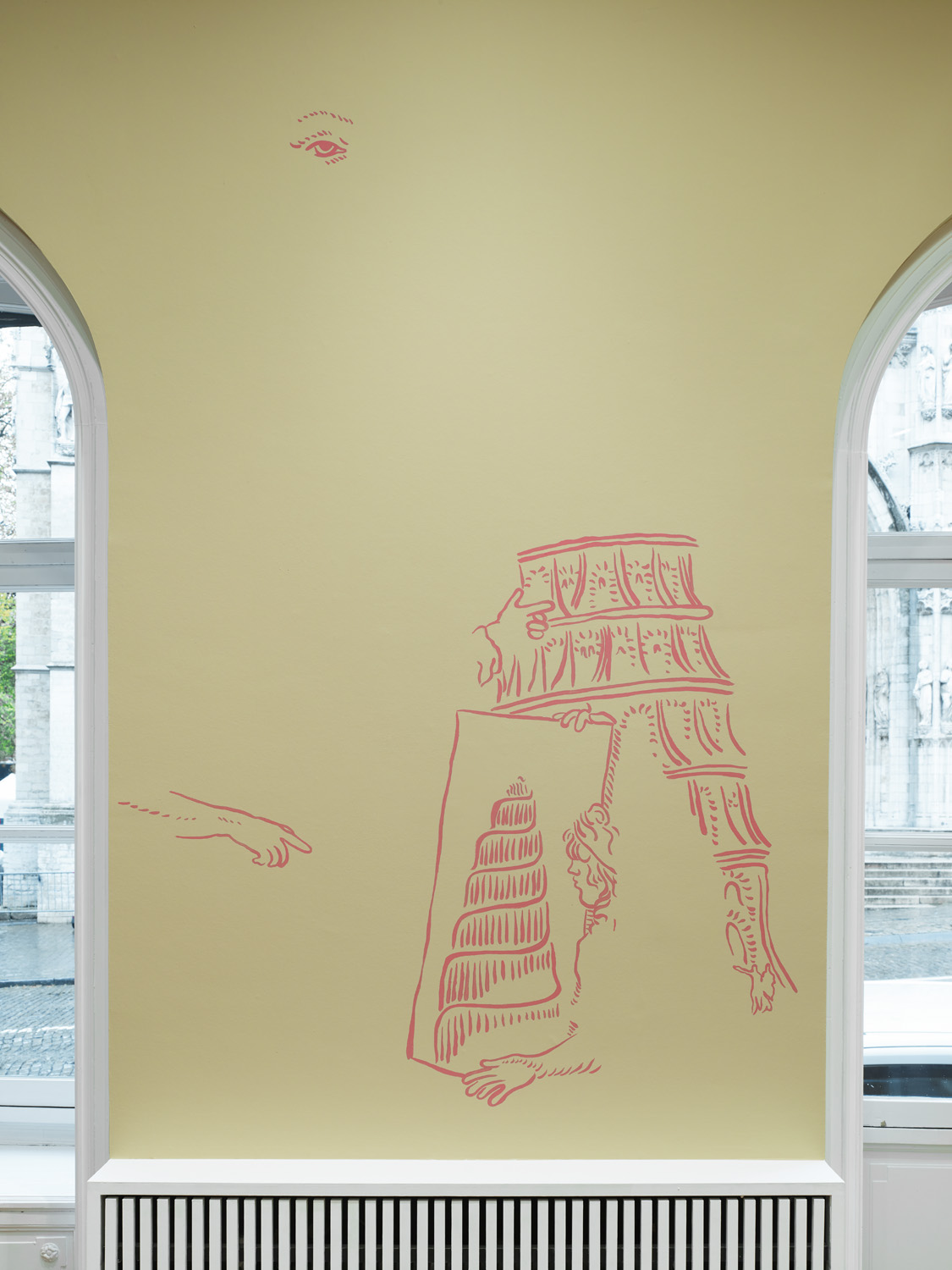
Future Archaeology, 2023
acrylic paint variable dimensions
Photo: Kristien Daem
The drawings by Mariana Castillo Deball show the tower in various stages of building and collapse. In one drawing, a woman is holding the design of the tower, while another portrays a community of builders having set up camp in the vicinity of the tower that is under construction. Another drawing shows Babel in ruins. Deball includes other pictorial elements, such as ethnographic objects from the Museu Nacional in Rio de Janeiro, Brazil, including clay figurines made by the Karajá Indigenous people from Central Brazil, as well as petecas (old shuttlecock-like objects made from straw and feathers for a game similar to present-day badminton).5 These motifs, which have trickled in from other projects the artist worked on simultaneously – just like Babel, as a story, a building, and a ruin – are of ongoing interest to her.
Having transformed these drawings into linocuts, Castillo Deball printed them on paper made by Gangolf Ulbricht, a collaborator with whom she has worked before. From these prints, which she destroyed and tore into snippets of different sizes, she created new sheets of paper in three different colors: grapefruit pink, pistachio green, and chocolate brown. These 56 x 76 cm paper sheets are reminiscent of an archaeological excavation site, with shards of pottery captured in the soil, frozen in time. While some of these papers are kept in this state, others serve as surface and background for a new round of prints, so that the linocut drawings begin to repeat themselves through different layers.
A story progresses through its twists of plot and the passage of time. This also reflects how our relationship with things, human-made things, intensifies over time. Multiple readings are possible as the object is perceived through different eyes; it no longer speaks for itself. More than presenting a single image that emerges from a process, the works featured in this exhibition reveal the ongoing process of the artist at work, the practice of telling through matter and time – story upon story in an ongoing construction aspiring towards perfection but leaving behind fragments in its wake.
— Moosje M Goosen
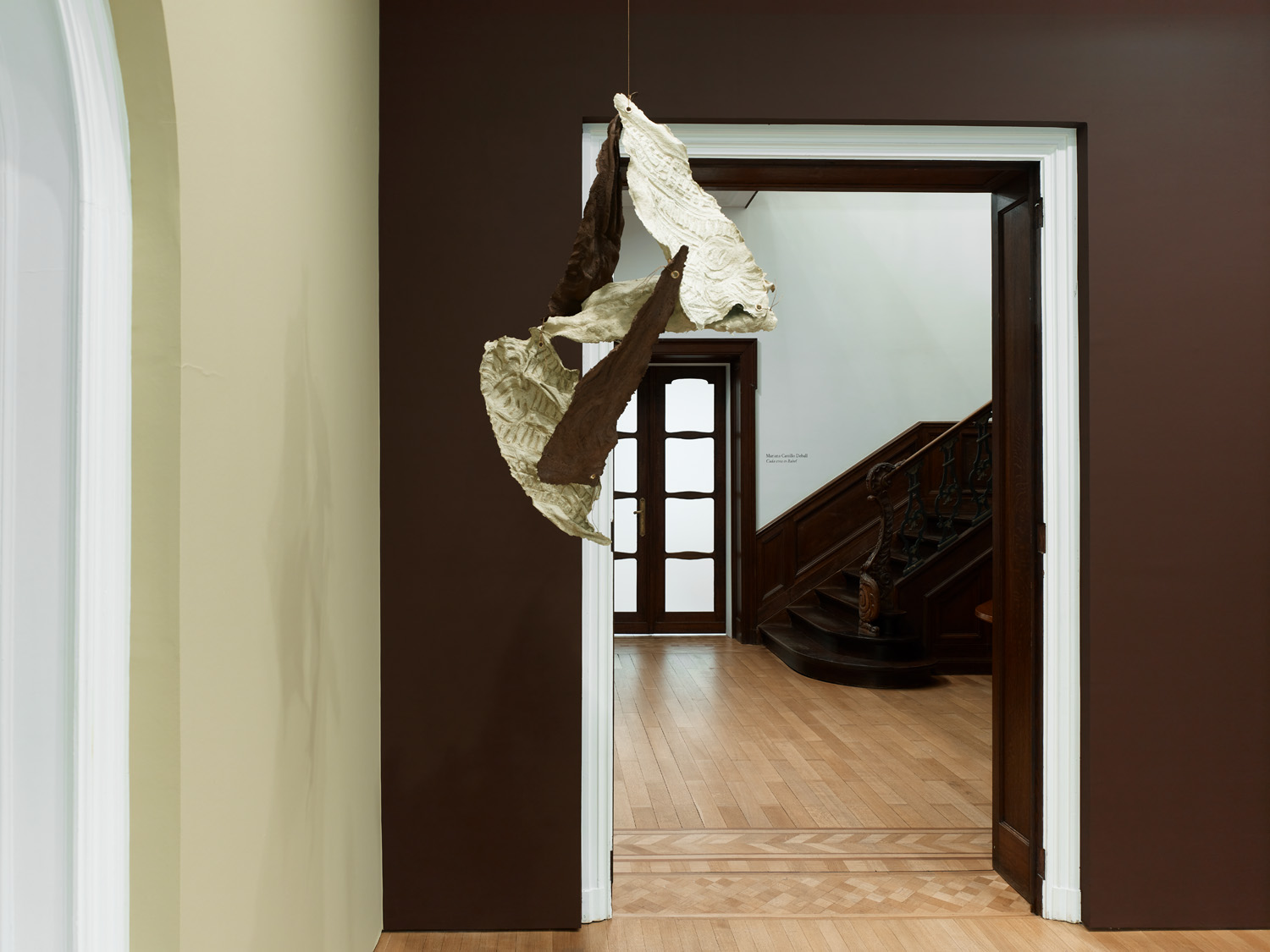
Exhibition view of: Cada cosa es Babel, Mendes Wood DM Brussel, Belgium, 2023
Photo: Kristien Daem
Sculpture: balal, aluminum wire, lino print on hand-made paper , 110 x 76 x 50 cm (approx.)
[1] See for instance: Jean Benet, The Construction of the Tower of Babel. Translated by Adrian Nathan West. Wakefield Press, 2017.
2 For more information about the reception of the Babel myth in Arabic cultures and language, see: Abdelfatah Kilito, The Tongue of Adam. Translated by Robyn Creswell. New Directions, New York: 2016.
3 In: Jacques Derrida, Des Tours de Babel, translated by Joseph F. Graham. In: Graham ed., Difference in Translation. Cornell University Press, 1985.
4 Mariana Castillo Deball, About the Book’s Grid in: Ixiptla, Spring 2023, Vol. V, Amarantus. Bom Dia Boa Tarde Boa Noite, Berlin 2023. pp.7-19.
5 On September 2, 2018, there was a fire at the Museu Nacional in Rio de Janeiro which burned down its entire collection. This is the subject of Castillo Deball’s exhibition at Pivô in São Paulo, A Noite, which opened in September 2023, on the same date as the fire.
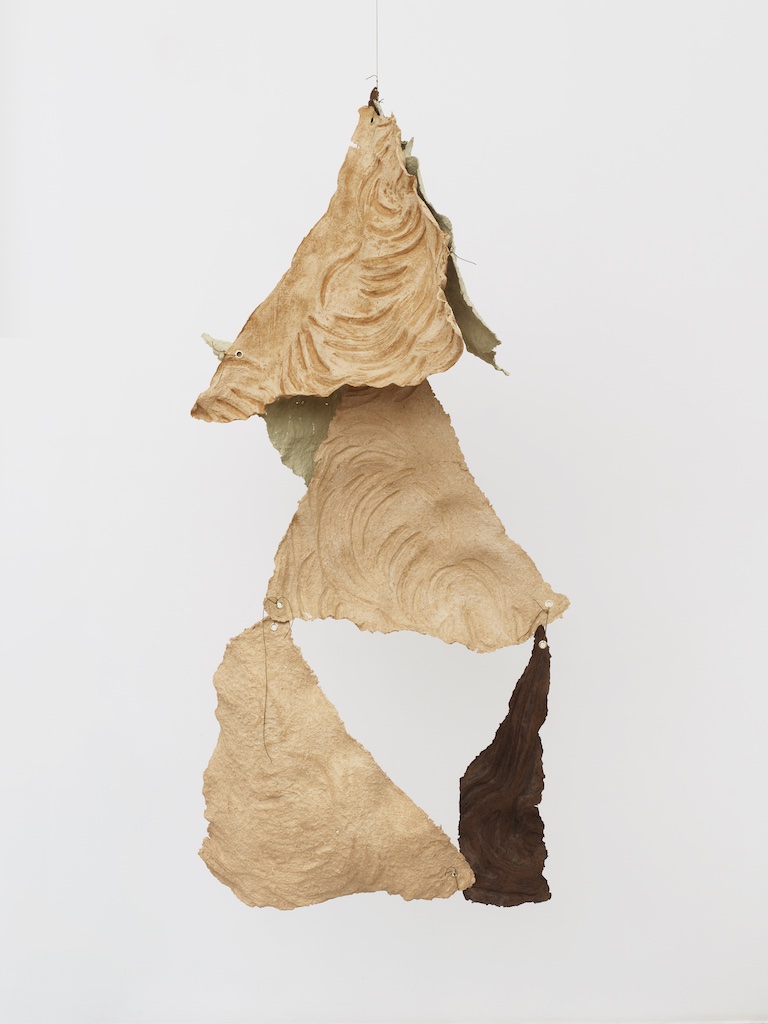
balbala, 2023
moulded papier-mâché, hemp thread and metal rings 175 x 75 x 60 cm (approx.)
Photo: Kristien Daem
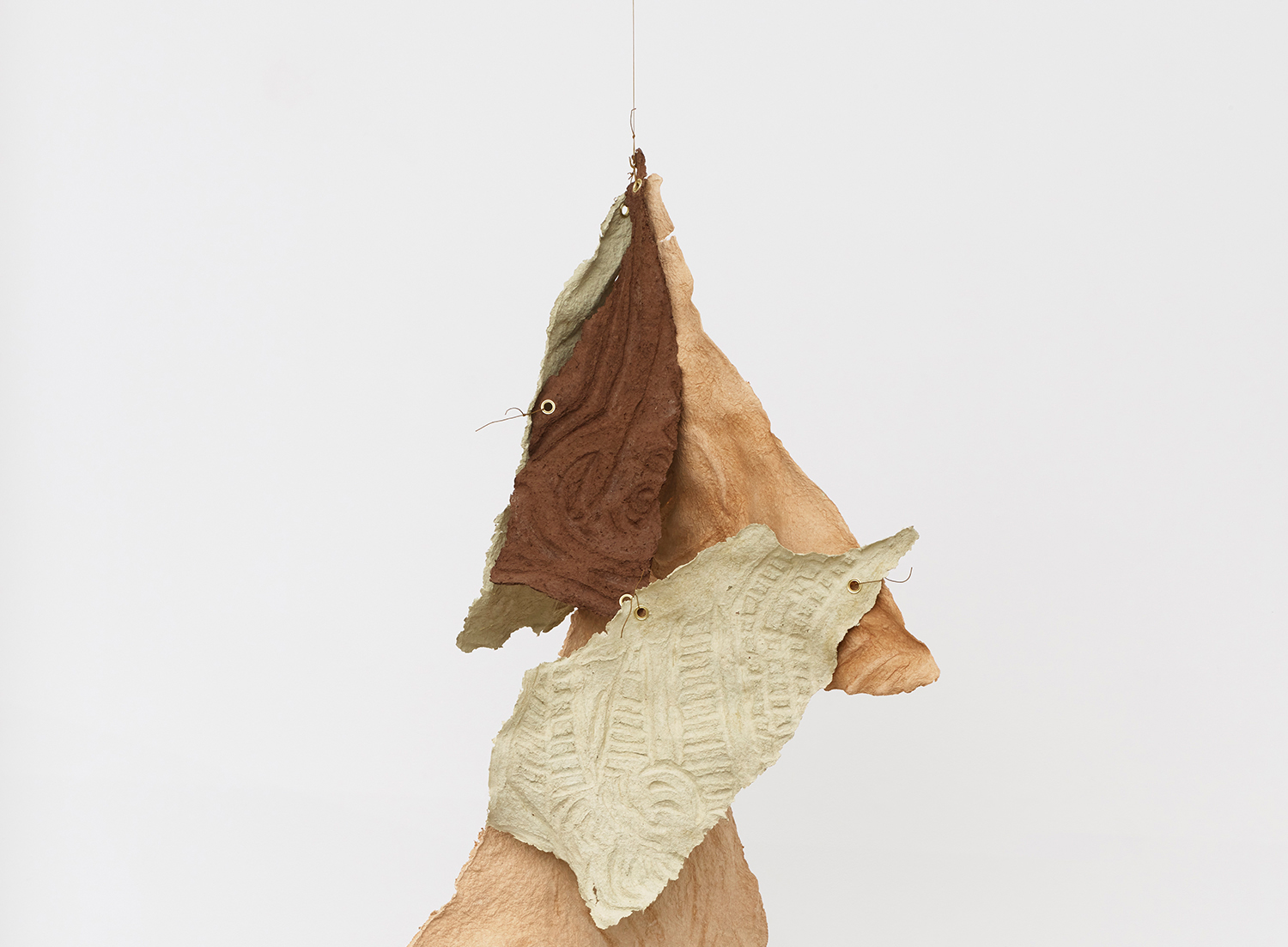
balbala, 2023
moulded papier-mâché, hemp thread and metal rings 175 x 75 x 60 cm (approx.)
Photo: Kristien Daem
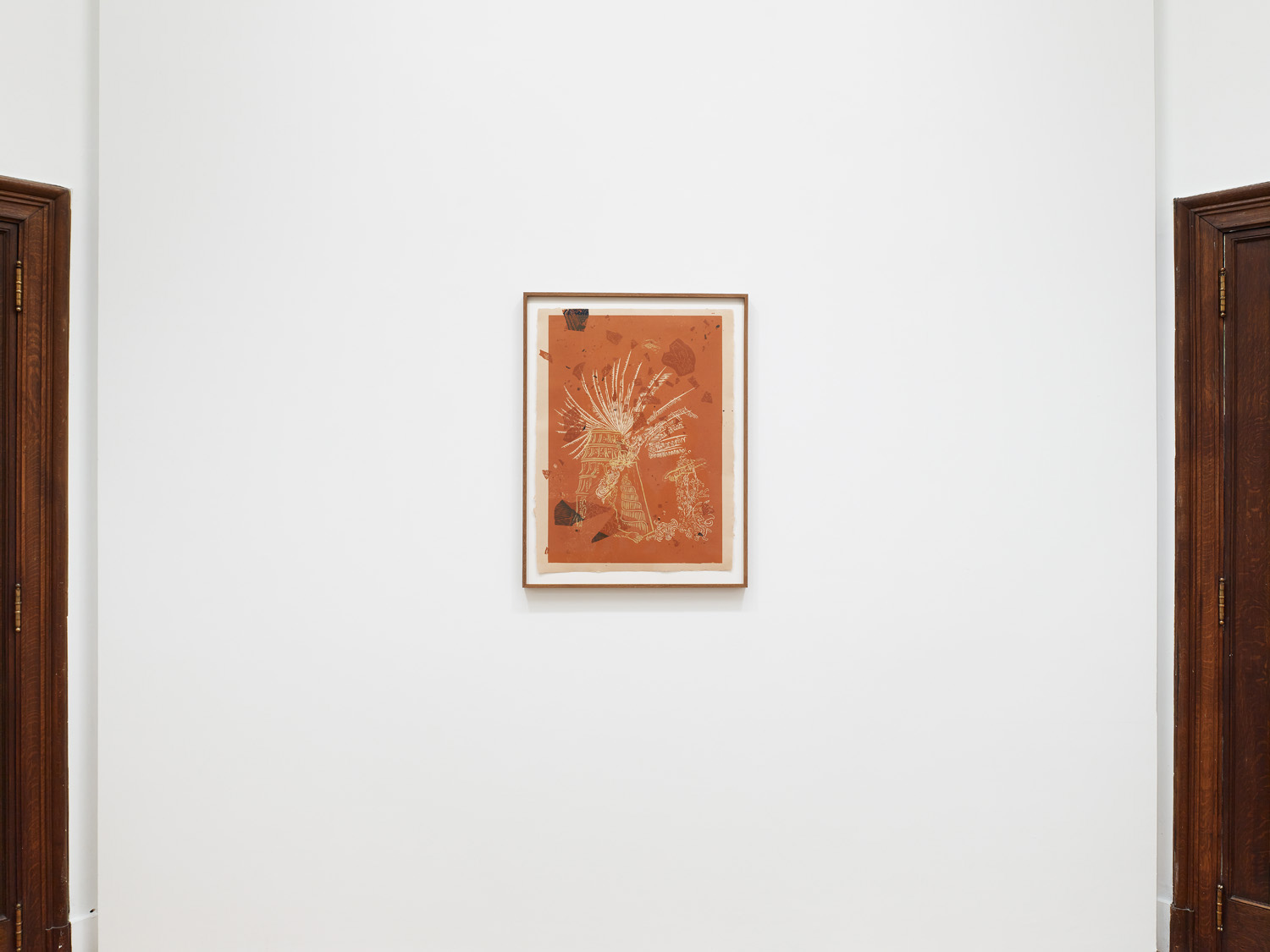
Exhibition view of: Cada cosa es Babel, Mendes Wood DM Brussel, Belgium, 2023
Photo: Kristien Daem
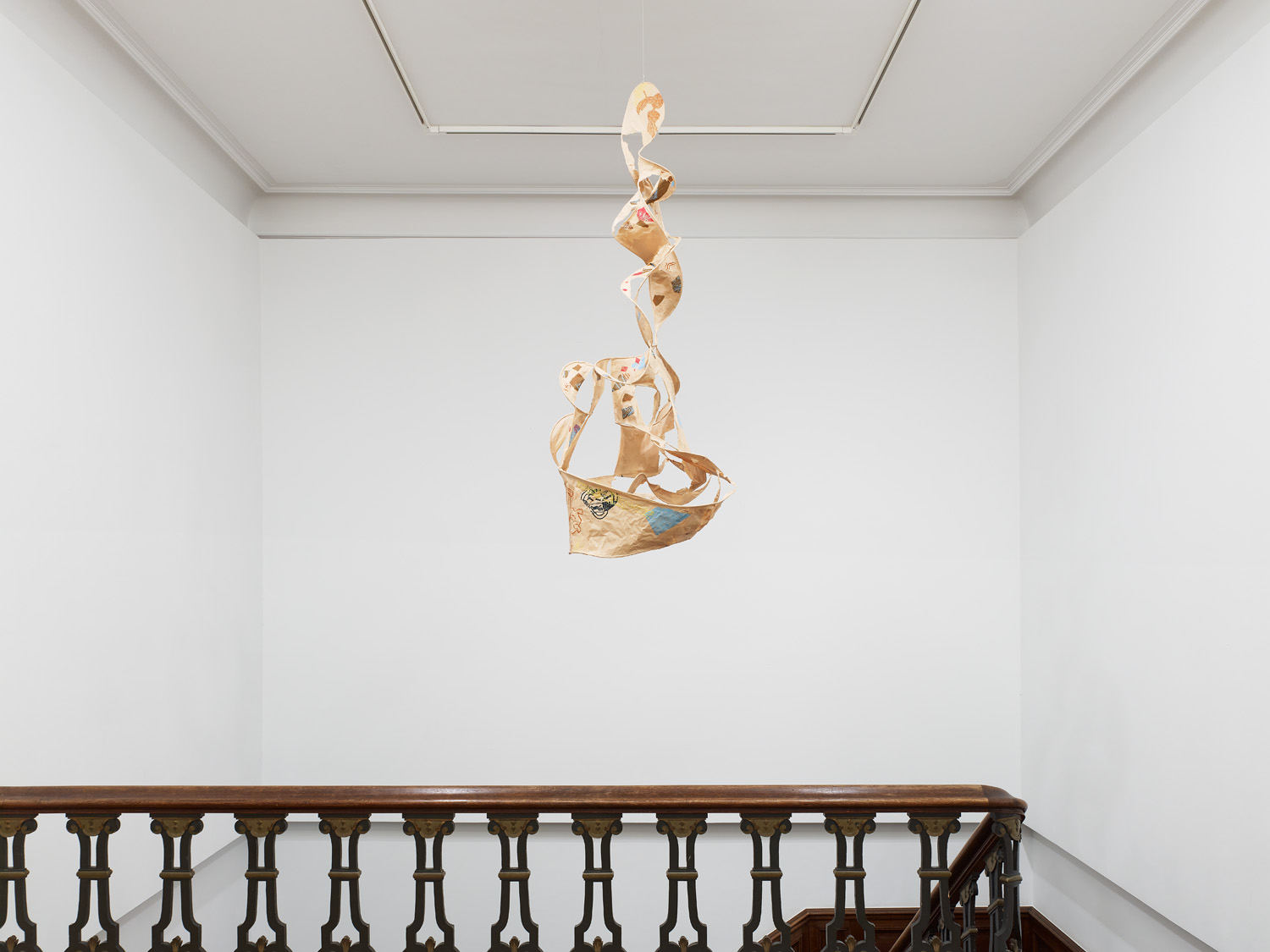
Exhibition view of: Cada cosa es Babel, Mendes Wood DM Brussel, Belgium, 2023
Photo: Kristien Daem
Sculpture: Paper Babel, aluminum wire, lino print on hand-made paper , 170 x 75 x 60 cm (approx.)
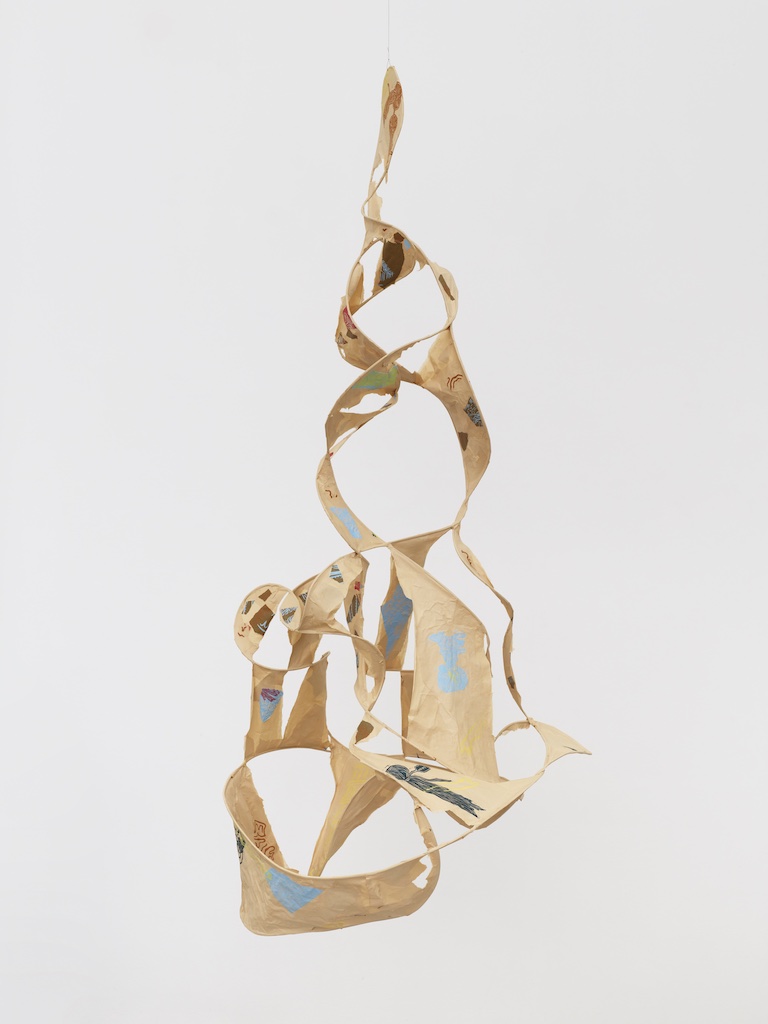
Paper Babel, 2023
aluminum wire, lino print on hand-made paper, 170 x 75 x 60 cm (approx.)
Photo: Kristien Daem
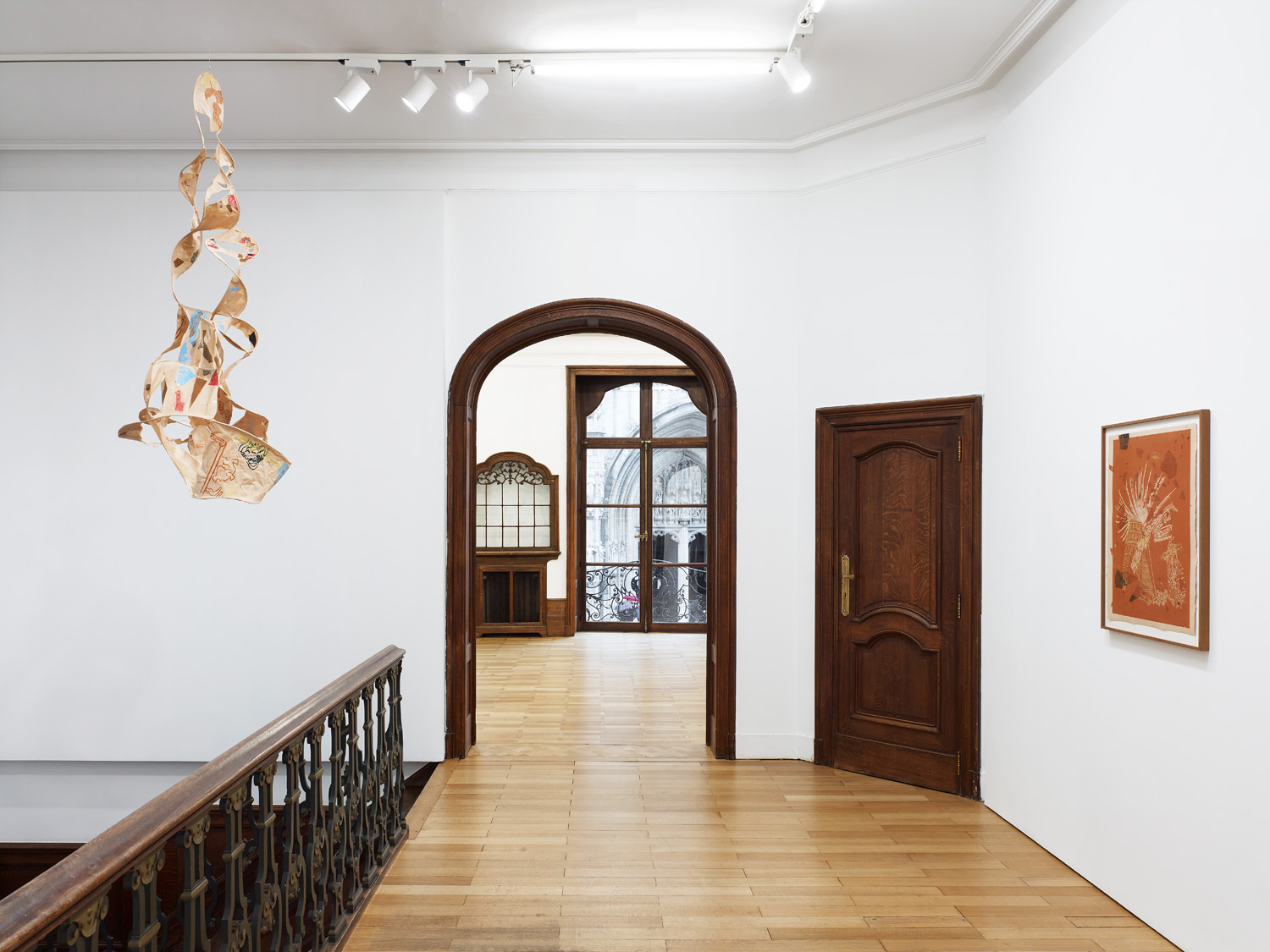
Exhibition view of: Cada cosa es Babel, Mendes Wood DM Brussel, Belgium, 2023
Photo: Kristien Daem

Exhibition view of: Cada cosa es Babel, Mendes Wood DM Brussel, Belgium, 2023
Photo: Kristien Daem
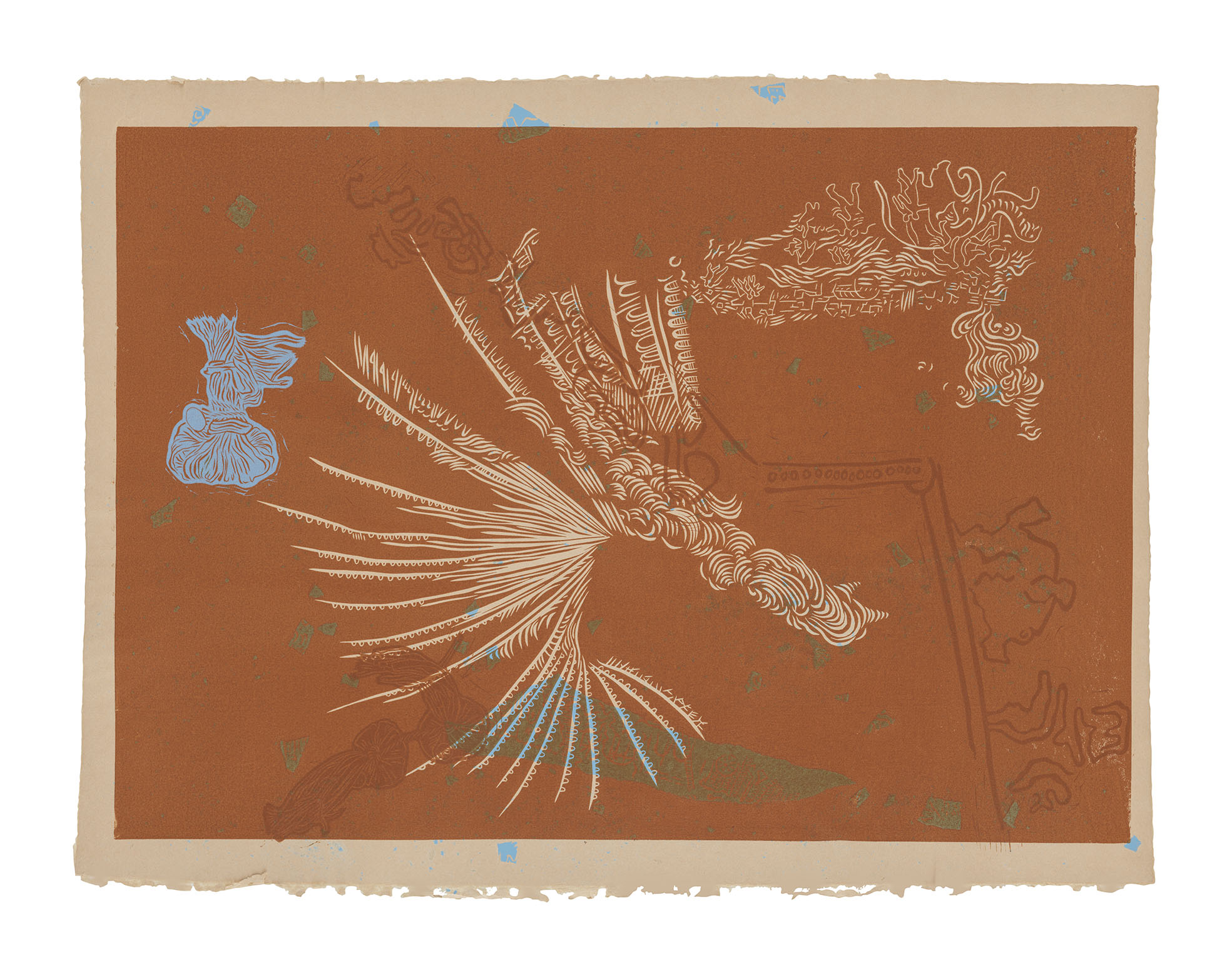
from the series Cada cosa es Babel 9, 2023
signed and dated
unique print on handmade paper 56.5 x 76.5 cm

from the series Cada cosa es Babel 4, 2023
signed and dated
unique print on handmade paper 56.5 x 76.5 cm
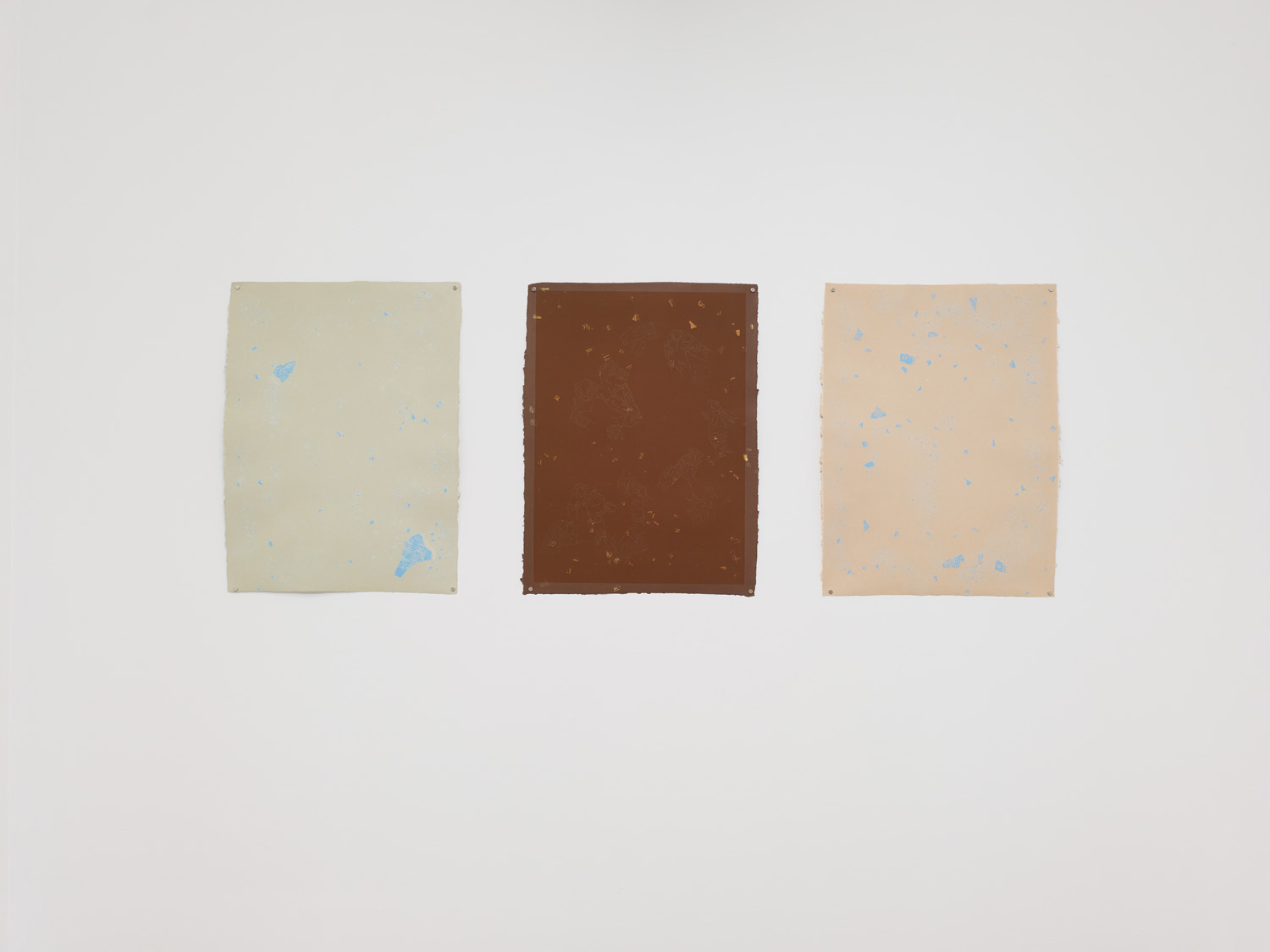
Exhibition view of: Cada cosa es Babel, Mendes Wood DM Brussel, Belgium, 2023
Photo: Kristien Daem
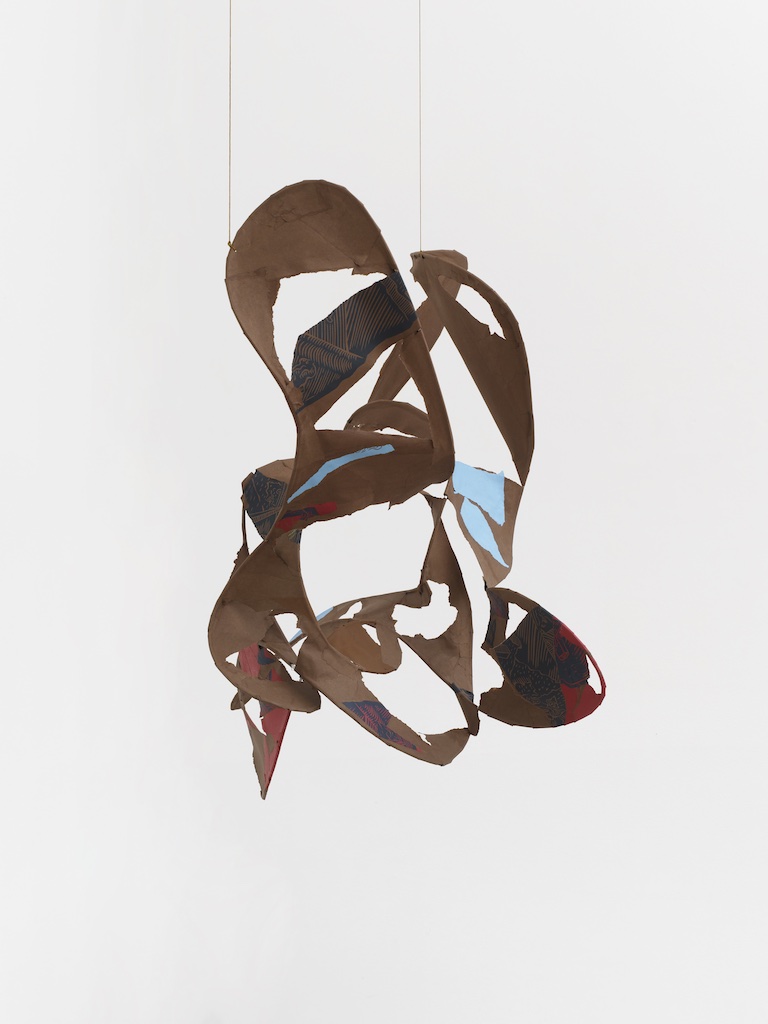
babble, 2023
aluminum wire, lino print on hand-made paper, 75 x 80 x 60 cm (approx.)
Photo: Kristien Daem
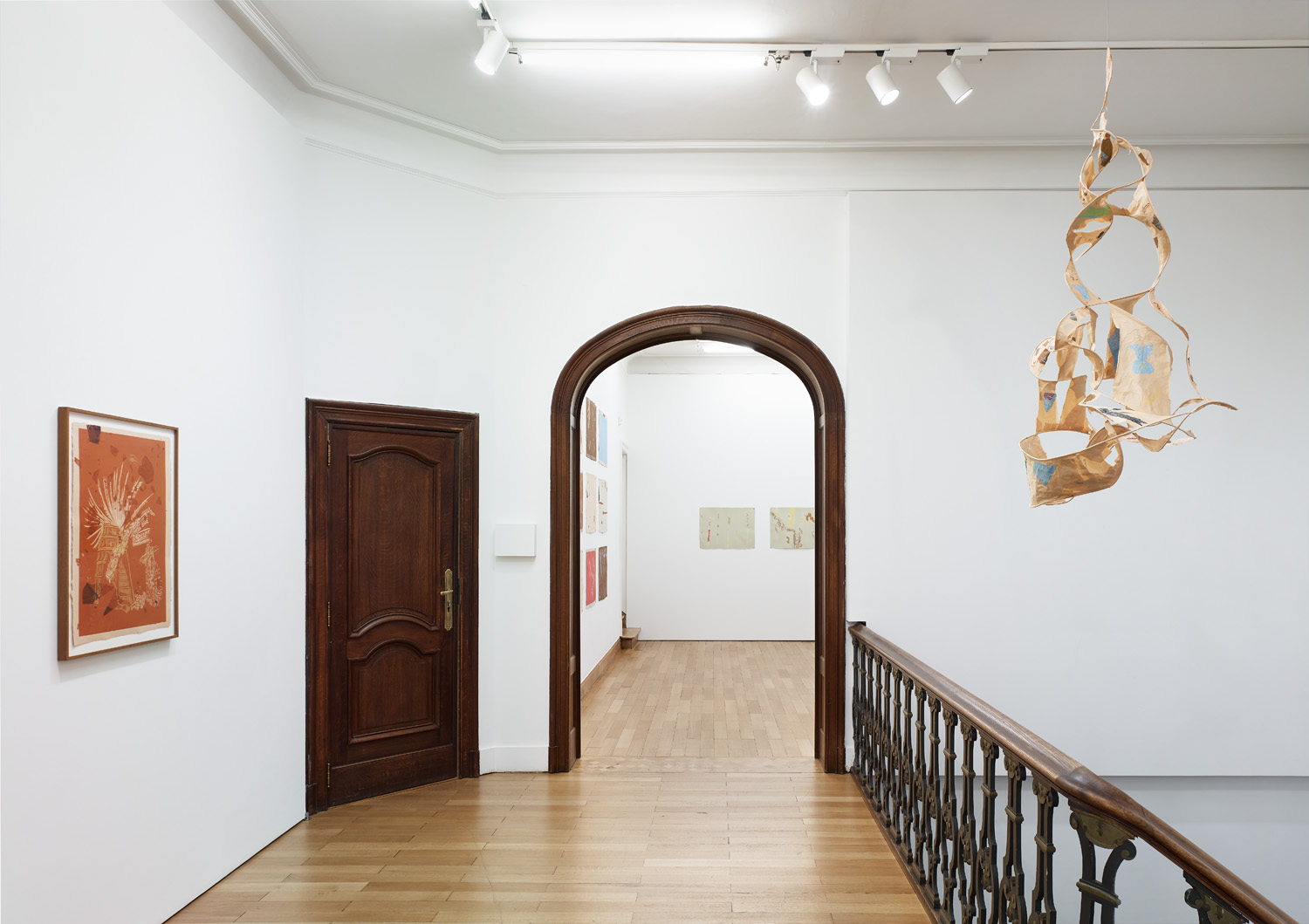
Exhibition view of: Cada cosa es Babel, Mendes Wood DM Brussel, Belgium, 2023
Photo: Kristien Daem
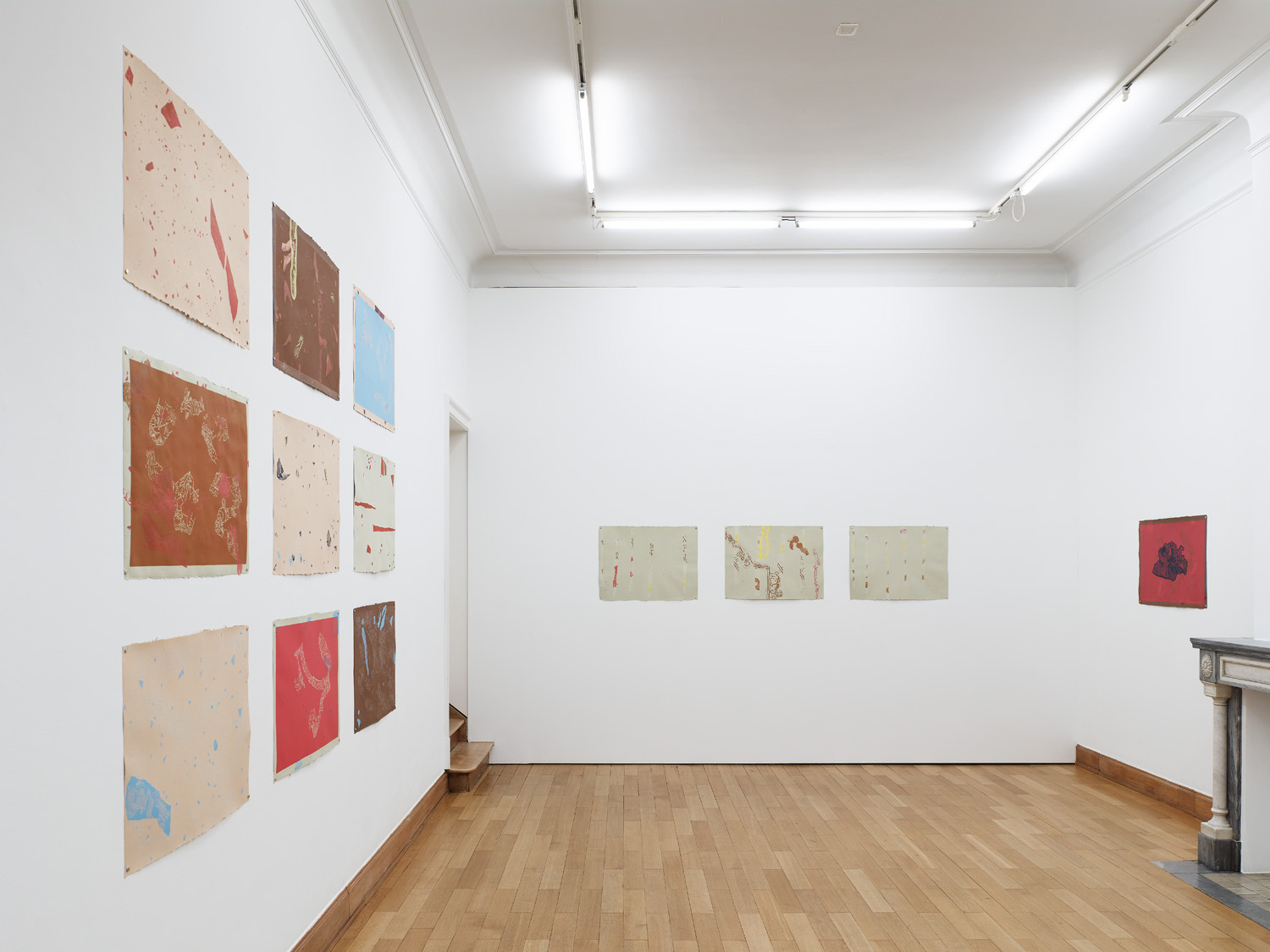
Exhibition view of: Cada cosa es Babel, Mendes Wood DM Brussel, Belgium, 2023
Photo: Kristien Daem
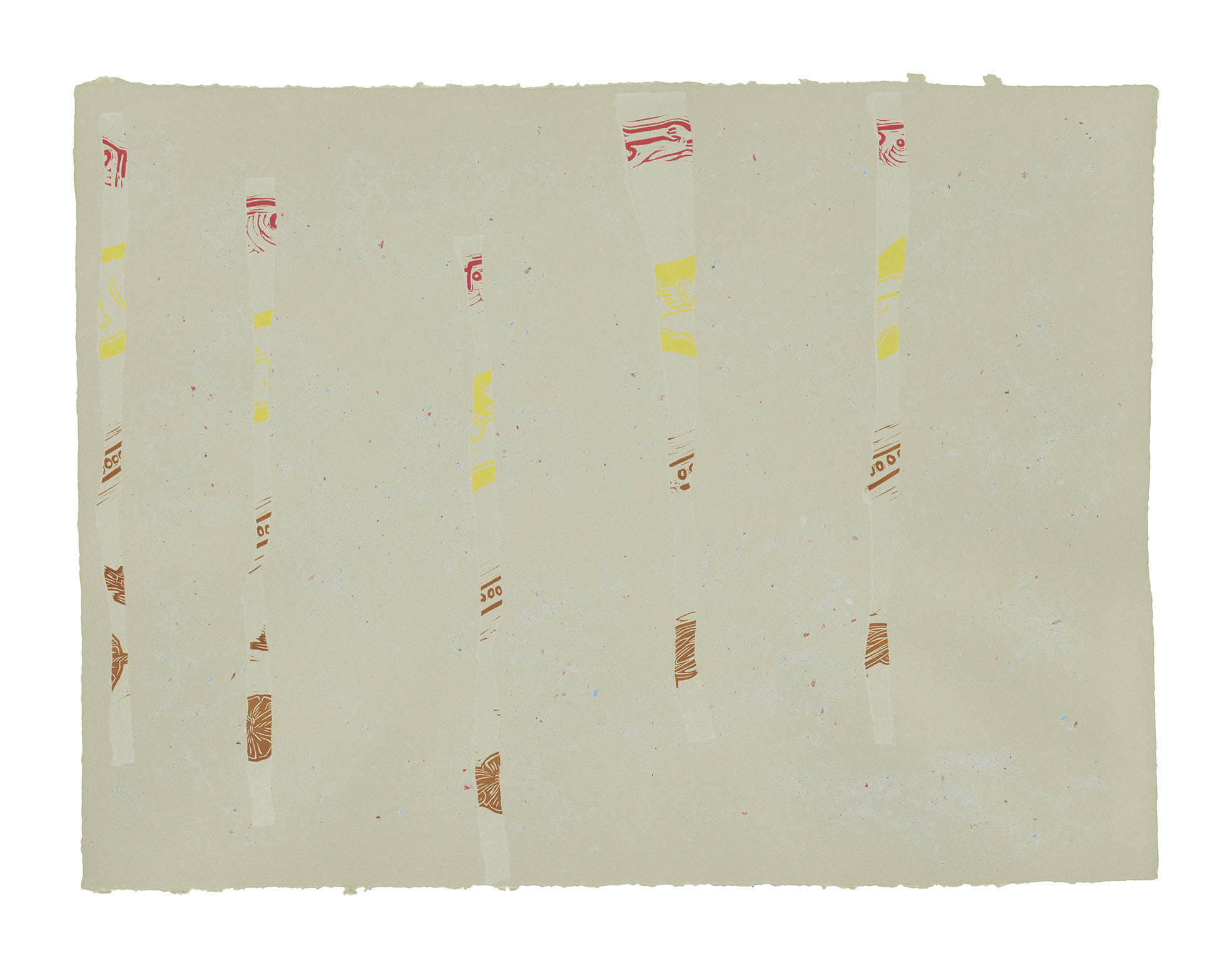
from the series Cada cosa es Babel 35, 2023
signed and dated
unique print on handmade paper 56.5 x 76.5 cm

from the series Cada cosa es Babel 14, 2023
signed and dated
unique print on handmade paper 56.5 x 76.5 cm
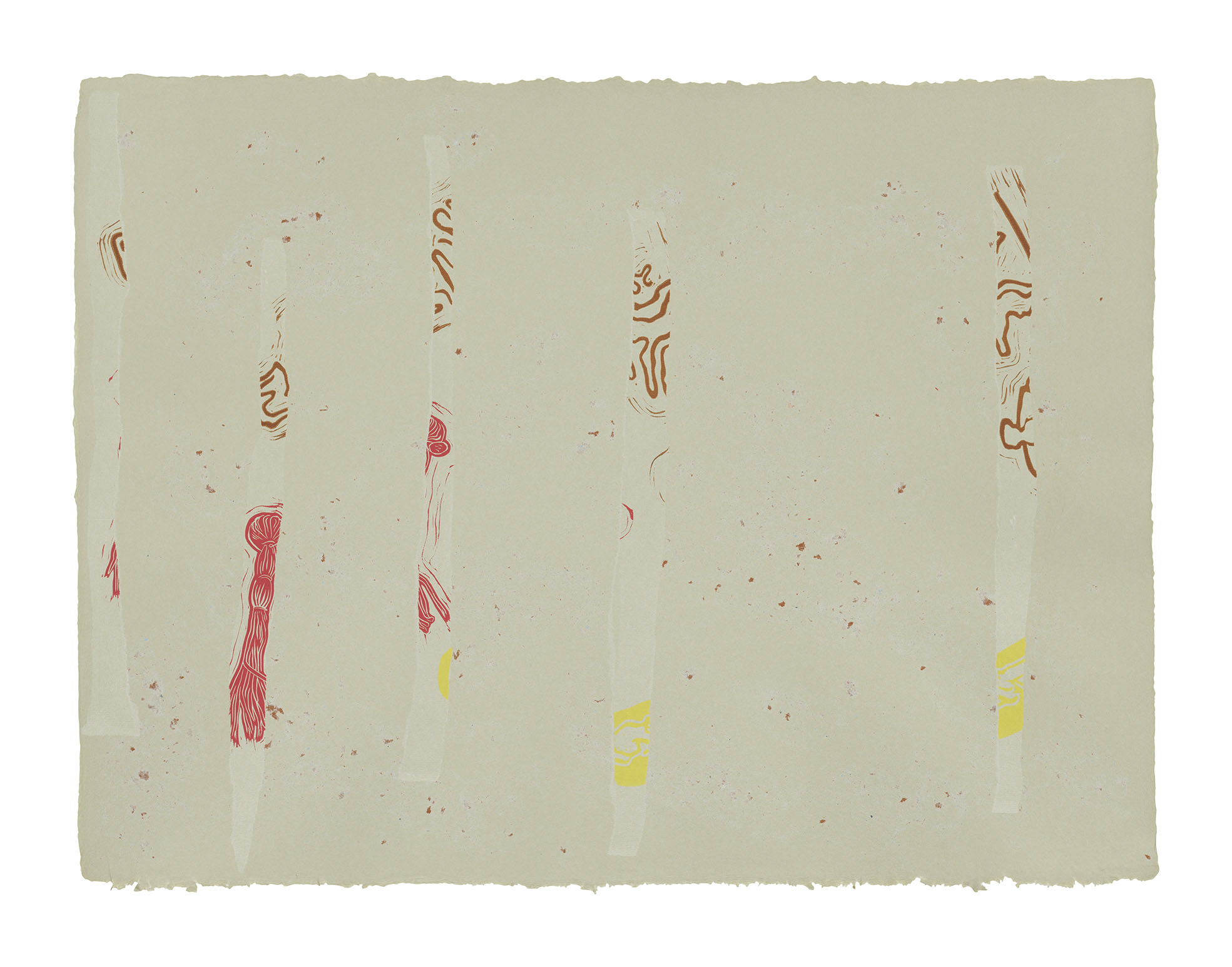
from the series Cada cosa es Babel 34, 2023
signed and dated
unique print on handmade paper 56.5 x 76.5 cm

Exhibition view of: Cada cosa es Babel, Mendes Wood DM Brussel, Belgium, 2023
Photo: Kristien Daem
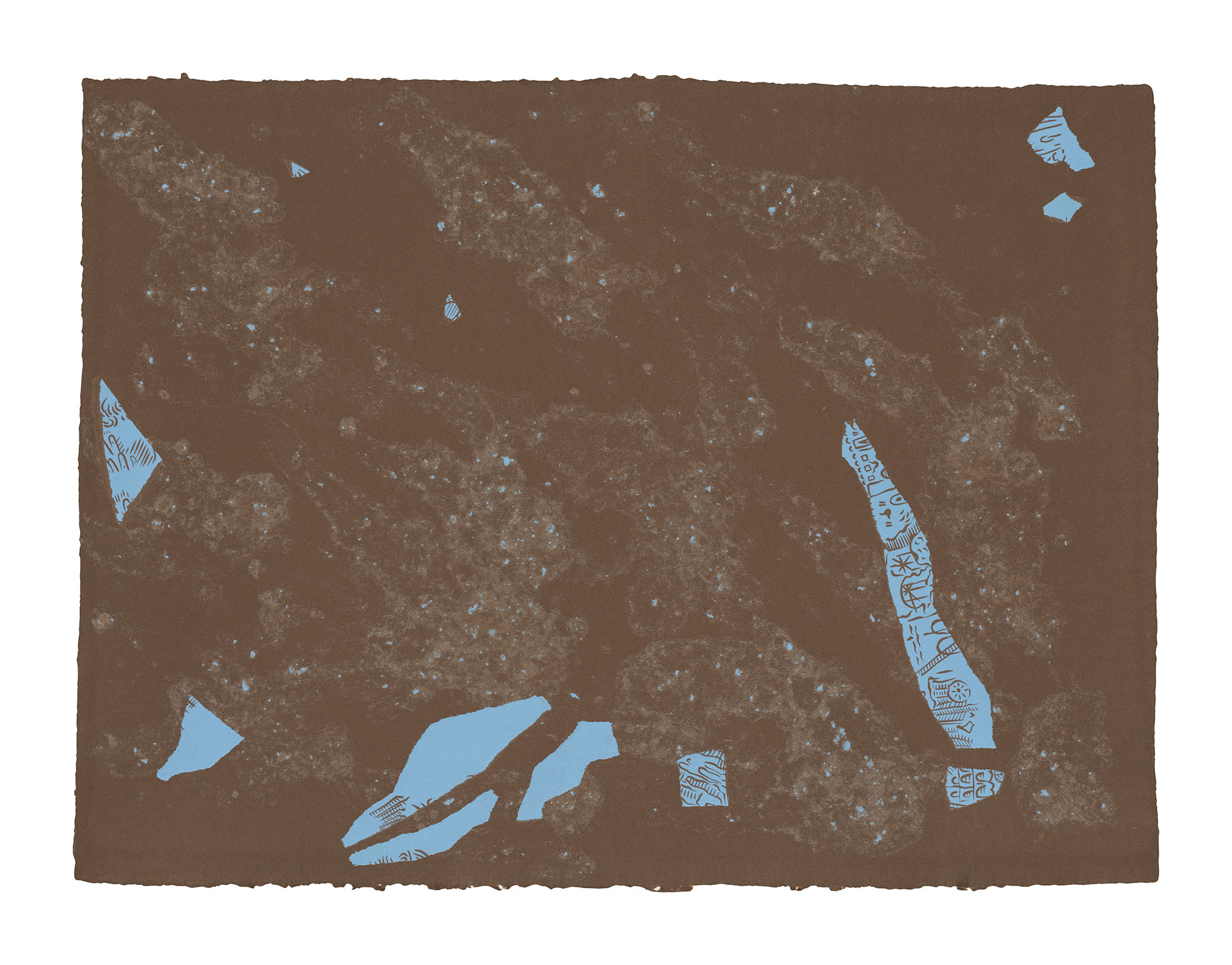
from the series Cada cosa es Babel 45, 2023
signed and dated
unique print on handmade paper 56.5 x 76.5 cm
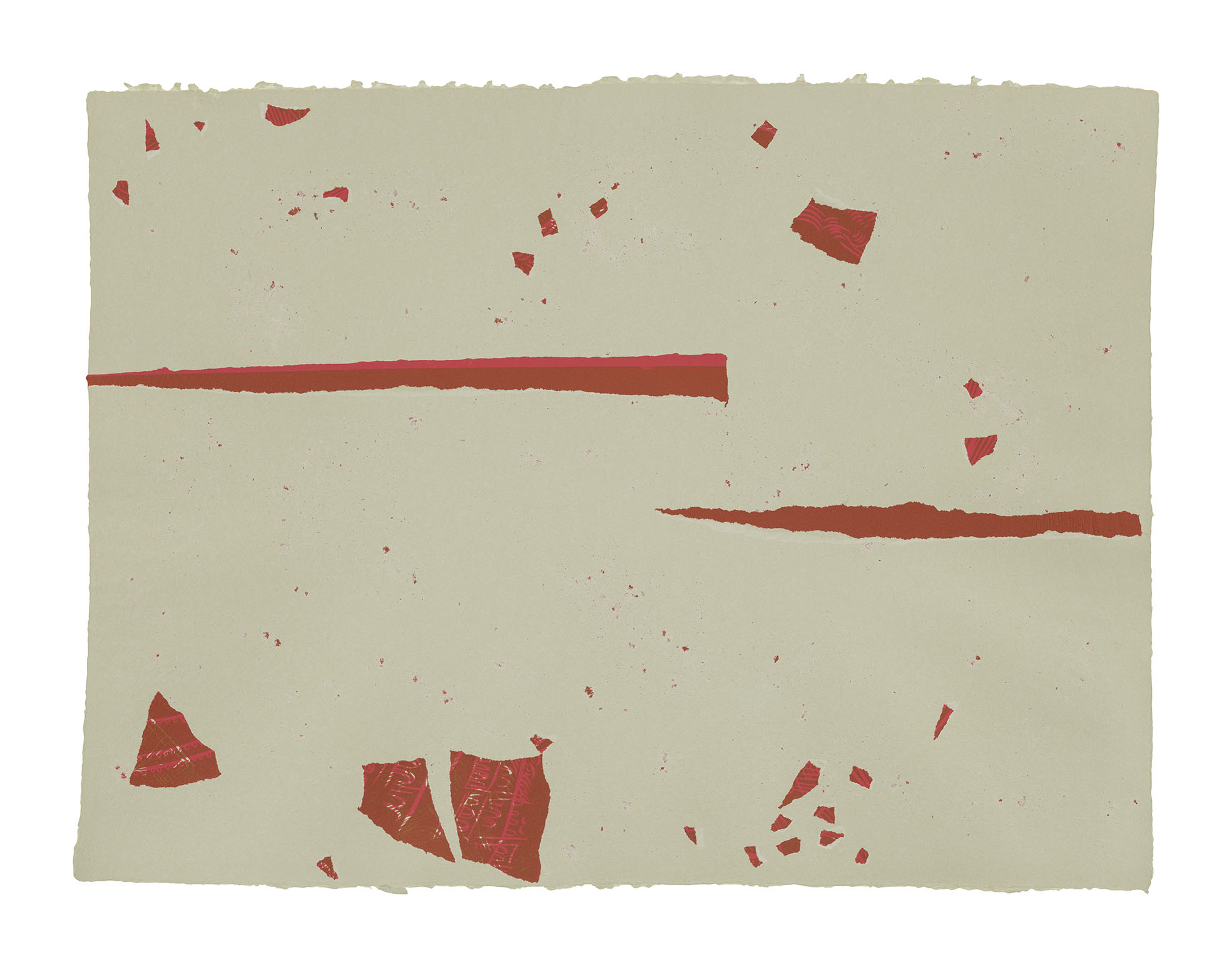
from the series Cada cosa es Babel 33, 2023
signed and dated
unique print on handmade paper 56.5 x 76.5 cm
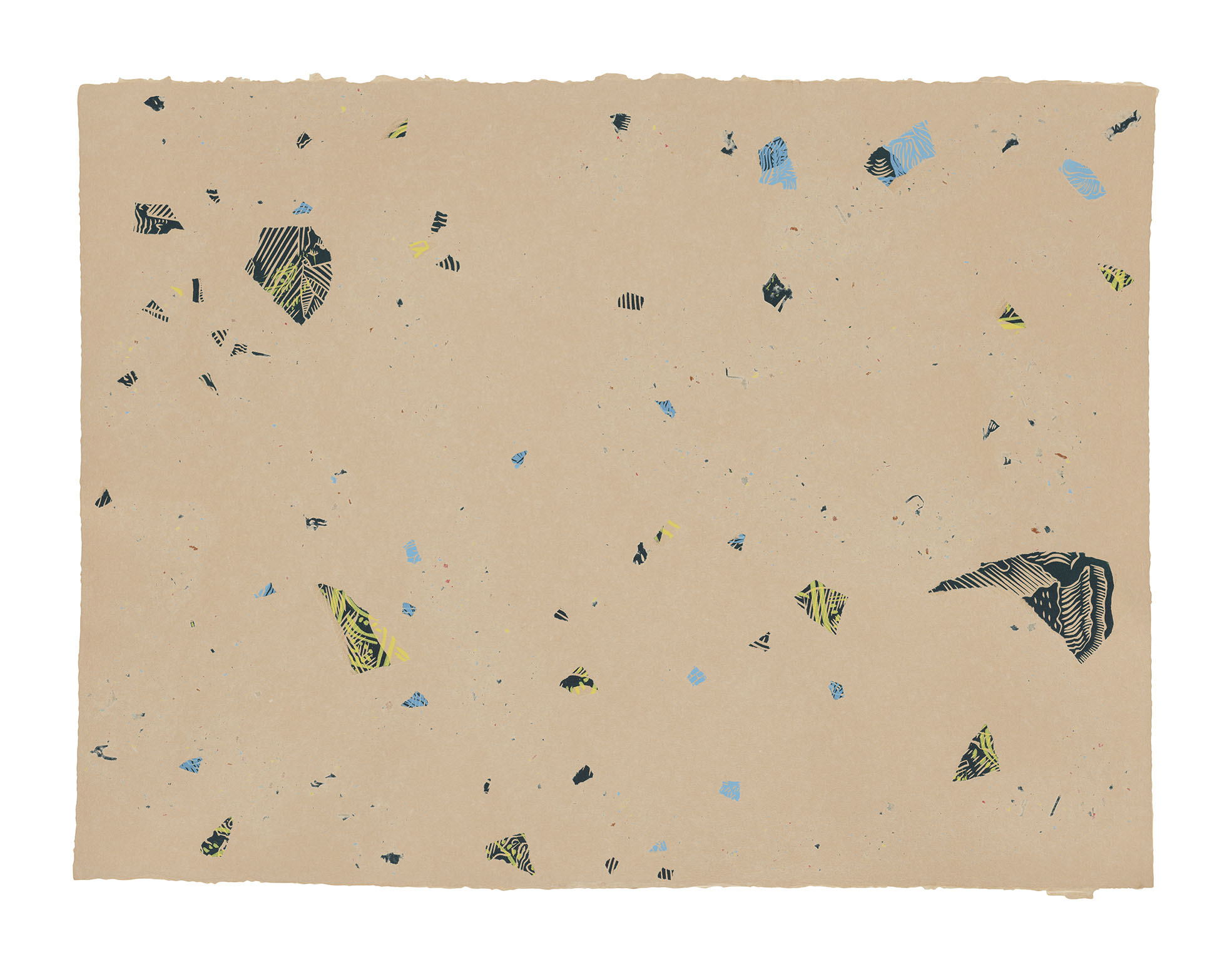
from the series Cada cosa es Babel 53, 2023
signed and dated
unique print on handmade paper 56.5 x 76.5 cm

from the series Cada cosa es Babel 48, 2023
unique print on handmade paper 56.5 x 76.5 cm
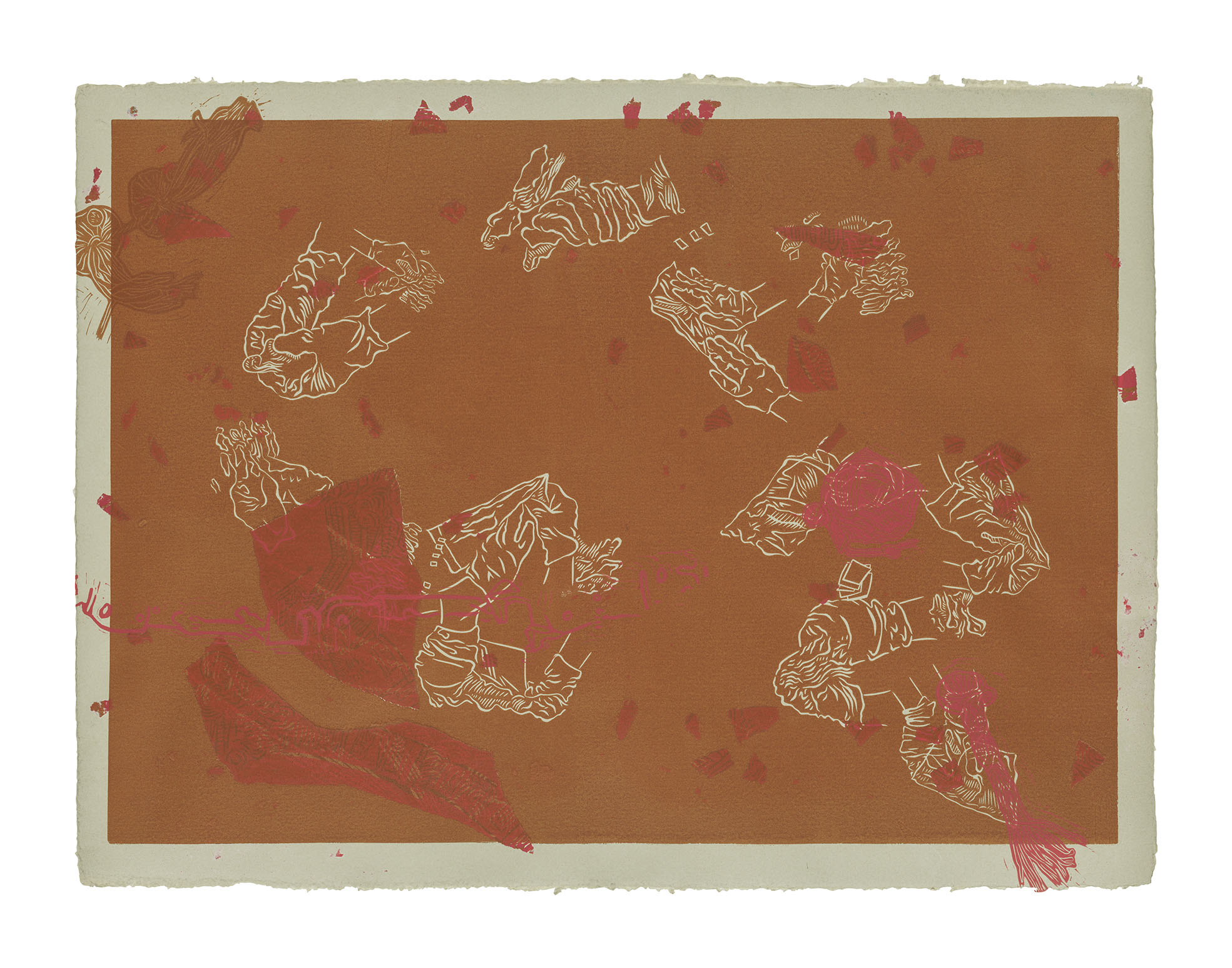
from the series Cada cosa es Babel 8, 2023
signed and dated
unique print on handmade paper 56.5 x 76.5 cm
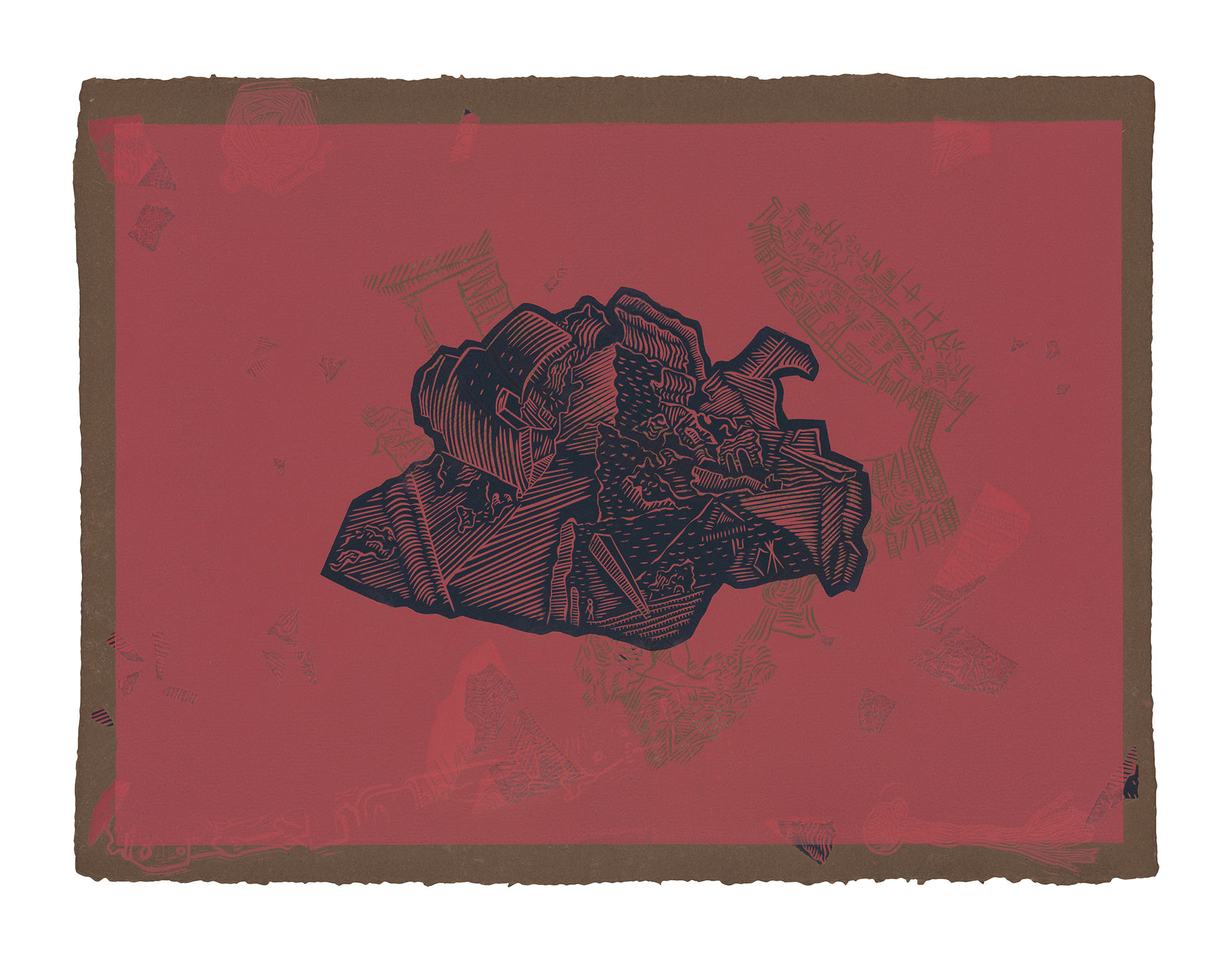
from the series Cada cosa es Babel 11, 2023
signed and dated
unique print on handmade paper 56.5 x 76.5 cm
Luce dietro tracce incompiute
October 19, 2023 – April 7, 2024
MUDEC, Milan, Italy
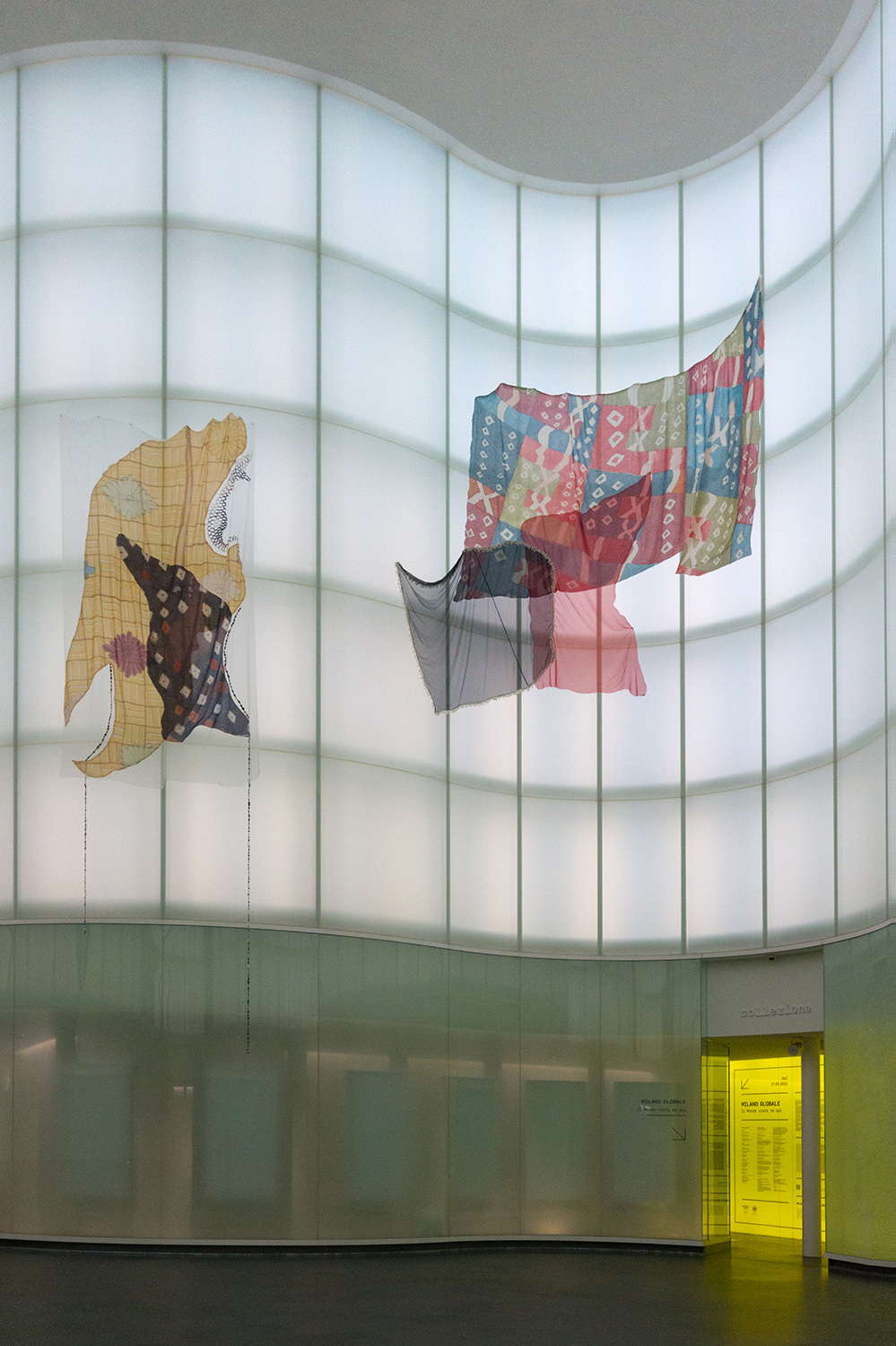
Luce dietro tracce incompiute
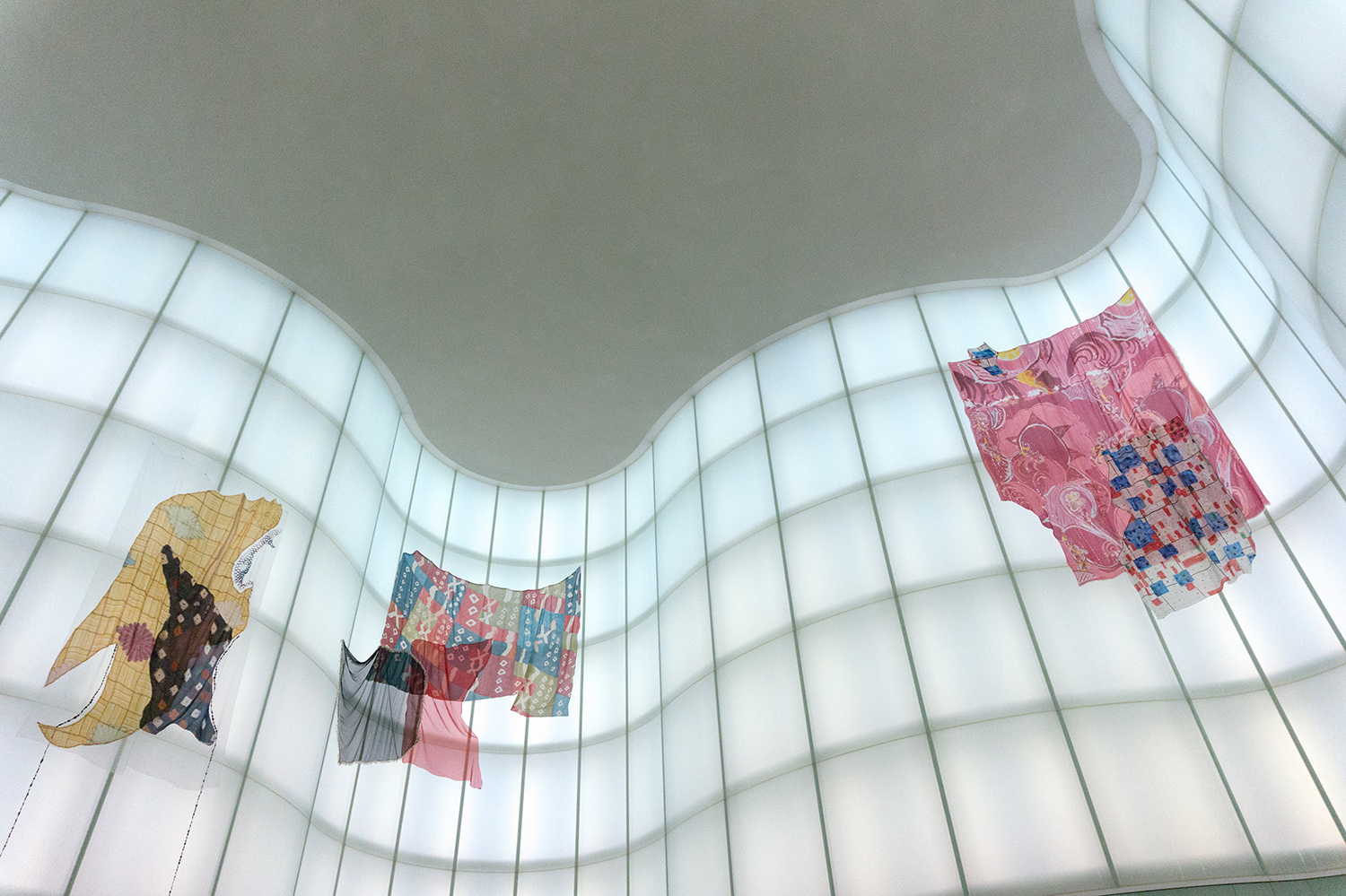
Luce dietro tracce incompiute
"Luce dietro tracce incompiute" it is the title of the textile installation by Mexican artist Mariana Castillo Deball (b. 1975), which will welcome visitors to the Museum in its monumental dimensions from Thursday, Oct. 19 until April 7, 2024. As part of Mudec's vision aimed at contemporary themes and practices, the Museum of Cultures presents for fall 2023 the second site-specific project curated by Katya Inozemtseva and Sara Rizzo with the support of 24 Ore Cultura and Fondazione Deloitte, this time to be hosted in the heart of the Agora.
Working with the collections of MUDEC and Fondazione Ratti Mariana Castillo Deball selected twelve textile fragments from different geographies and periods of time, based on which she subsequently created her own watercolors. These interpreted images were printed on fabric in an enlarged format, and assembled with additional textile elements at the NABA laboratories together with a group of students guided by Salvatore Averzano. In this way, three-dimensional "palimpsests" were formed, shimmering with different meanings and stories.
For the first time, the intervention on the glass surface of the Agora also changes the very status of the architecture, transforming it into a reflecting volume against which the sculptures, created with light, and semi-transparent fabrics, appear.
The natural light filtering through this composition of textile fragments, creating a new cartography.
Finally, a program of guided tours of the collections' storerooms will allow the public to discover the Museum's pieces reinterpreted by Deball in her installation. This recreates the often invisible link between the exhibition space and the heritage that becomes fully accessible.
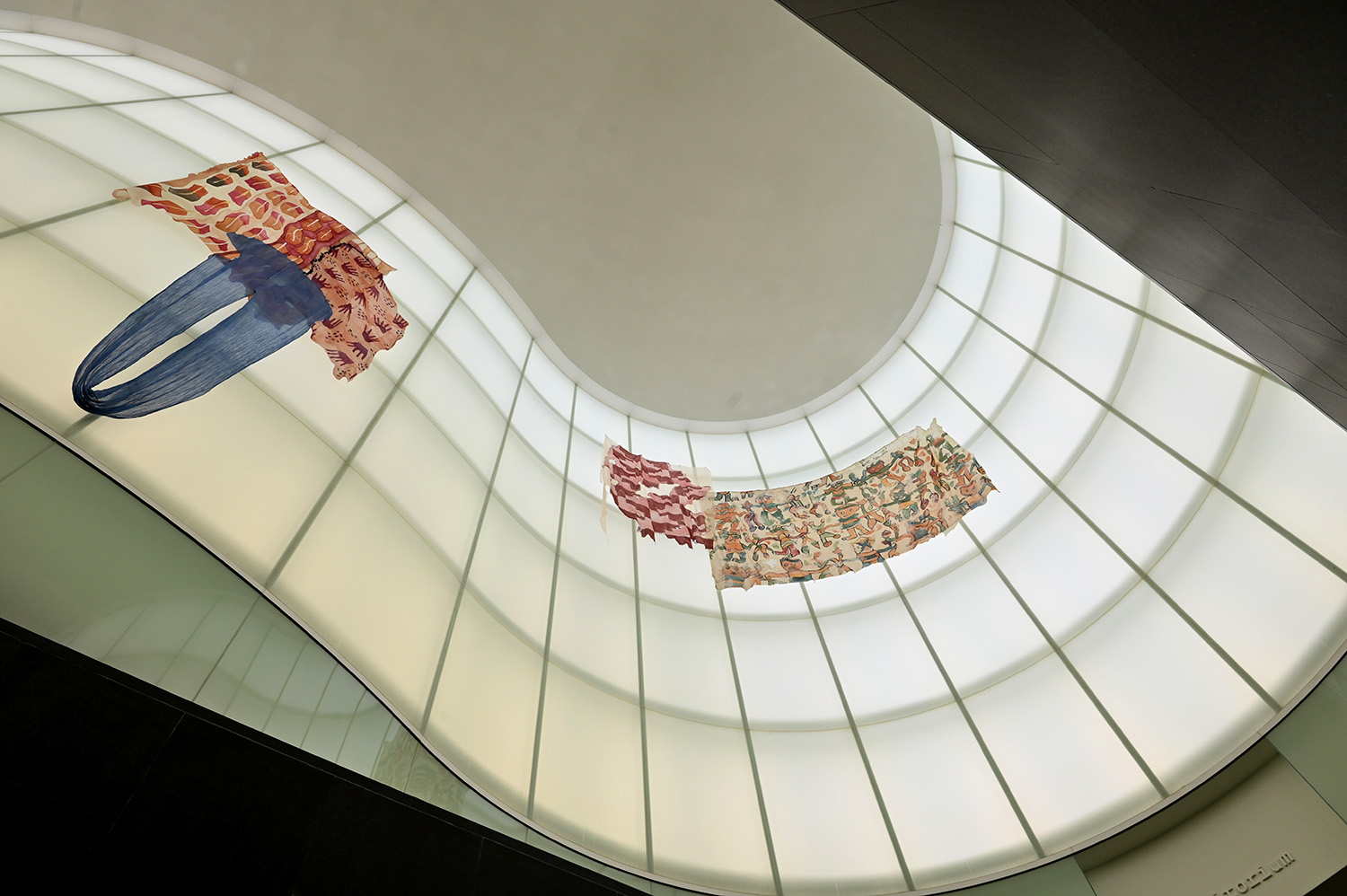
Luce dietro tracce incompiute
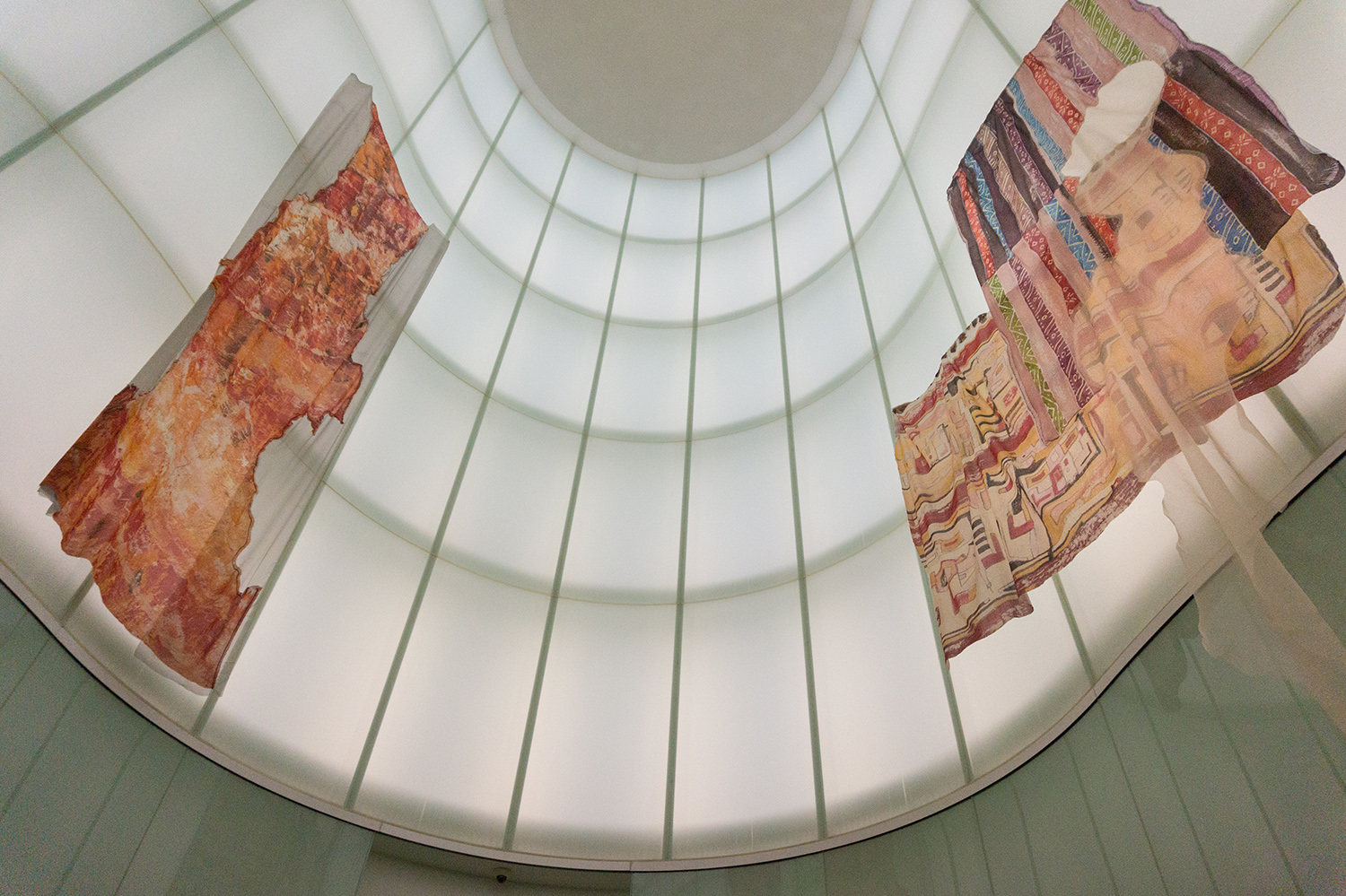
Luce dietro tracce incompiute
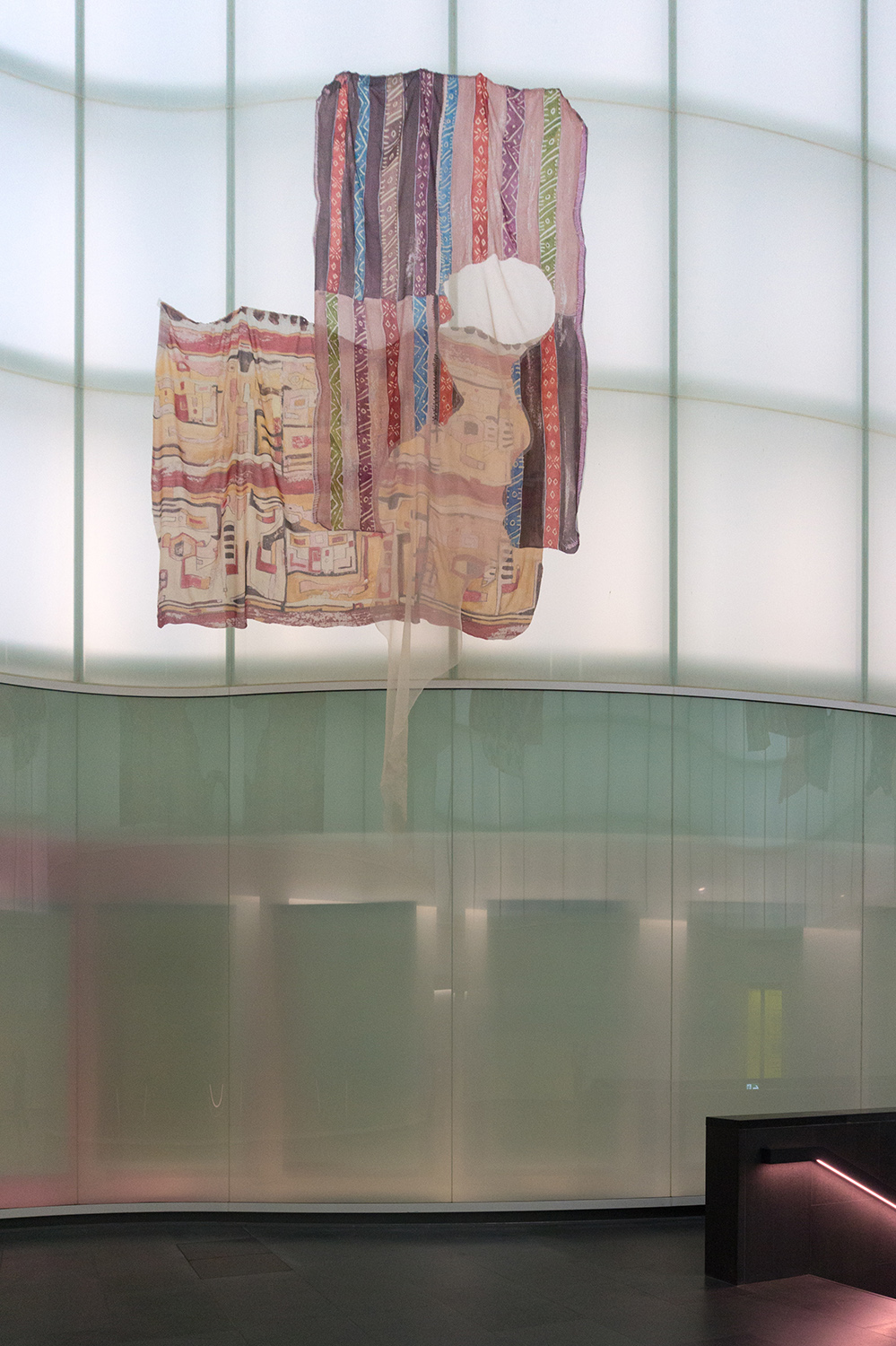
Luce dietro tracce incompiute
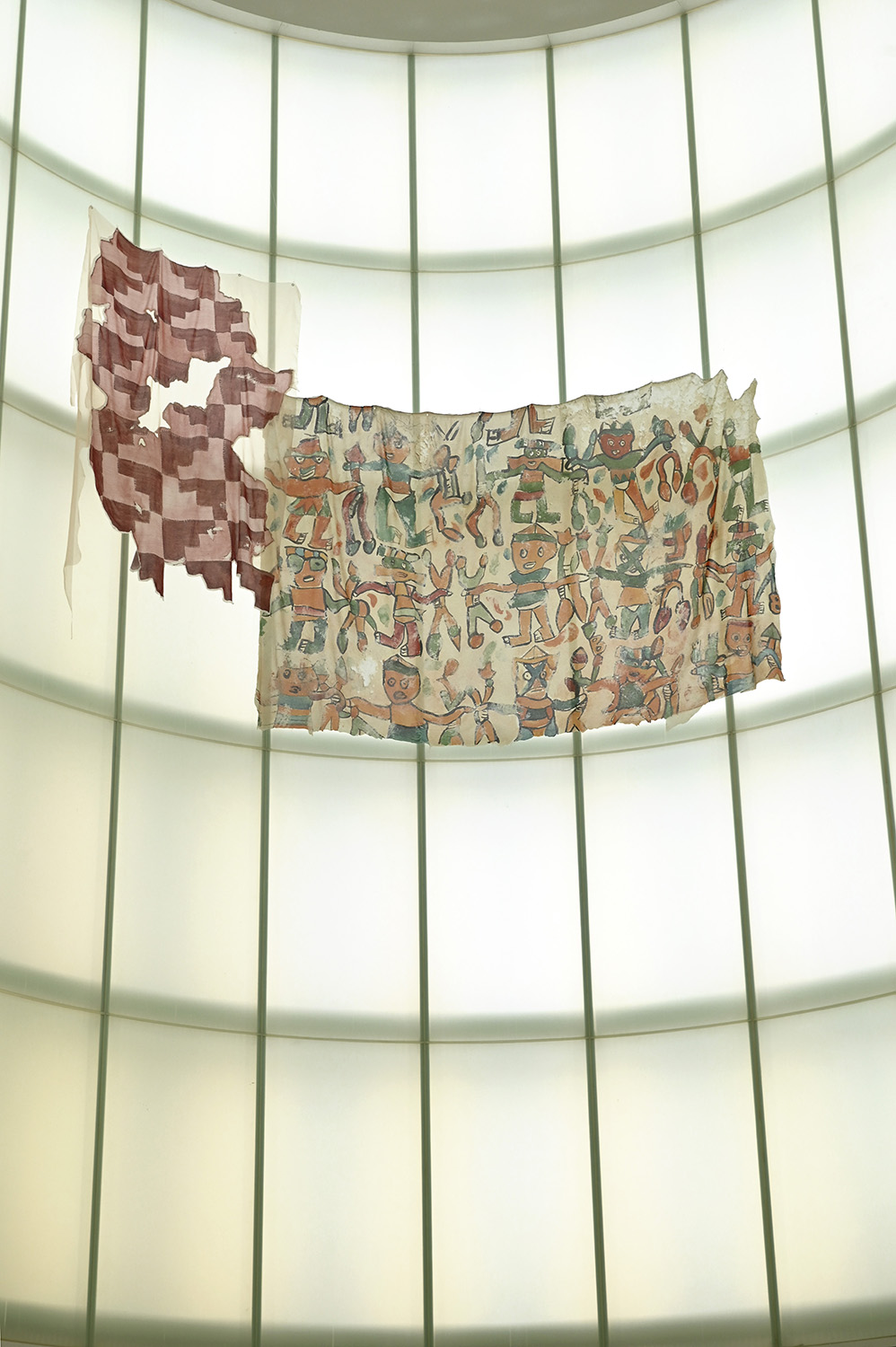
Luce dietro tracce incompiute
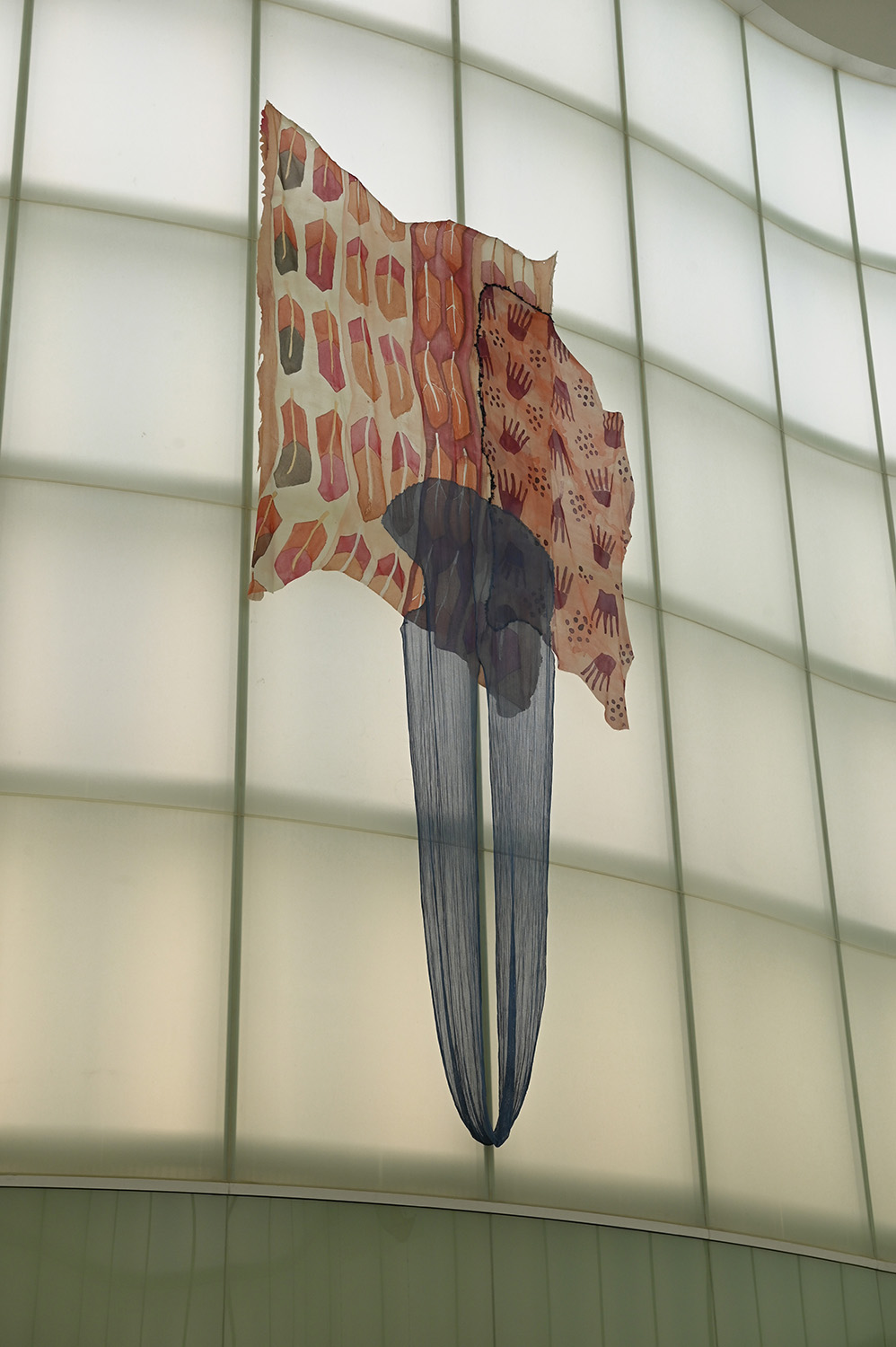
Luce dietro tracce incompiute
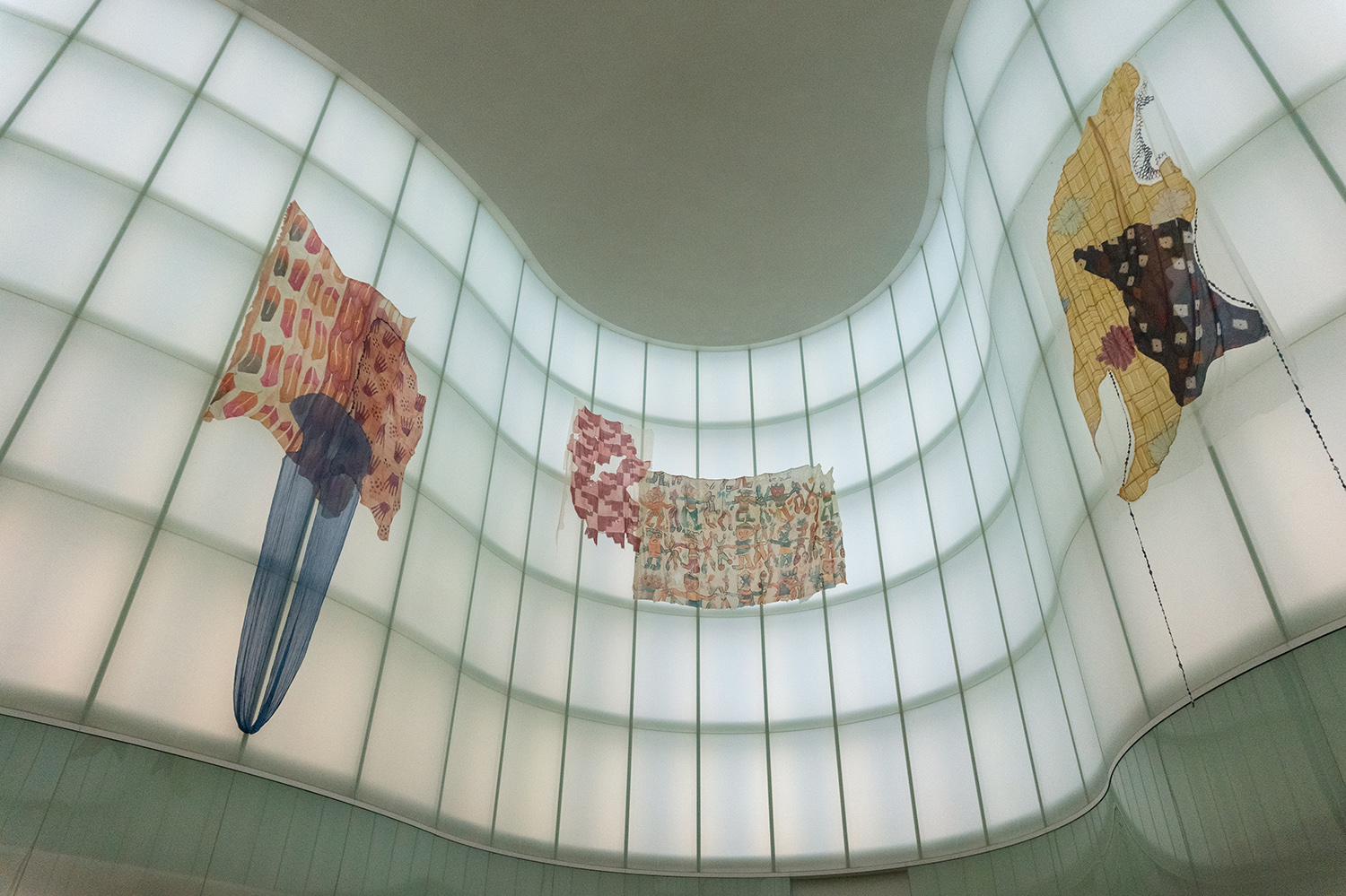
Luce dietro tracce incompiute
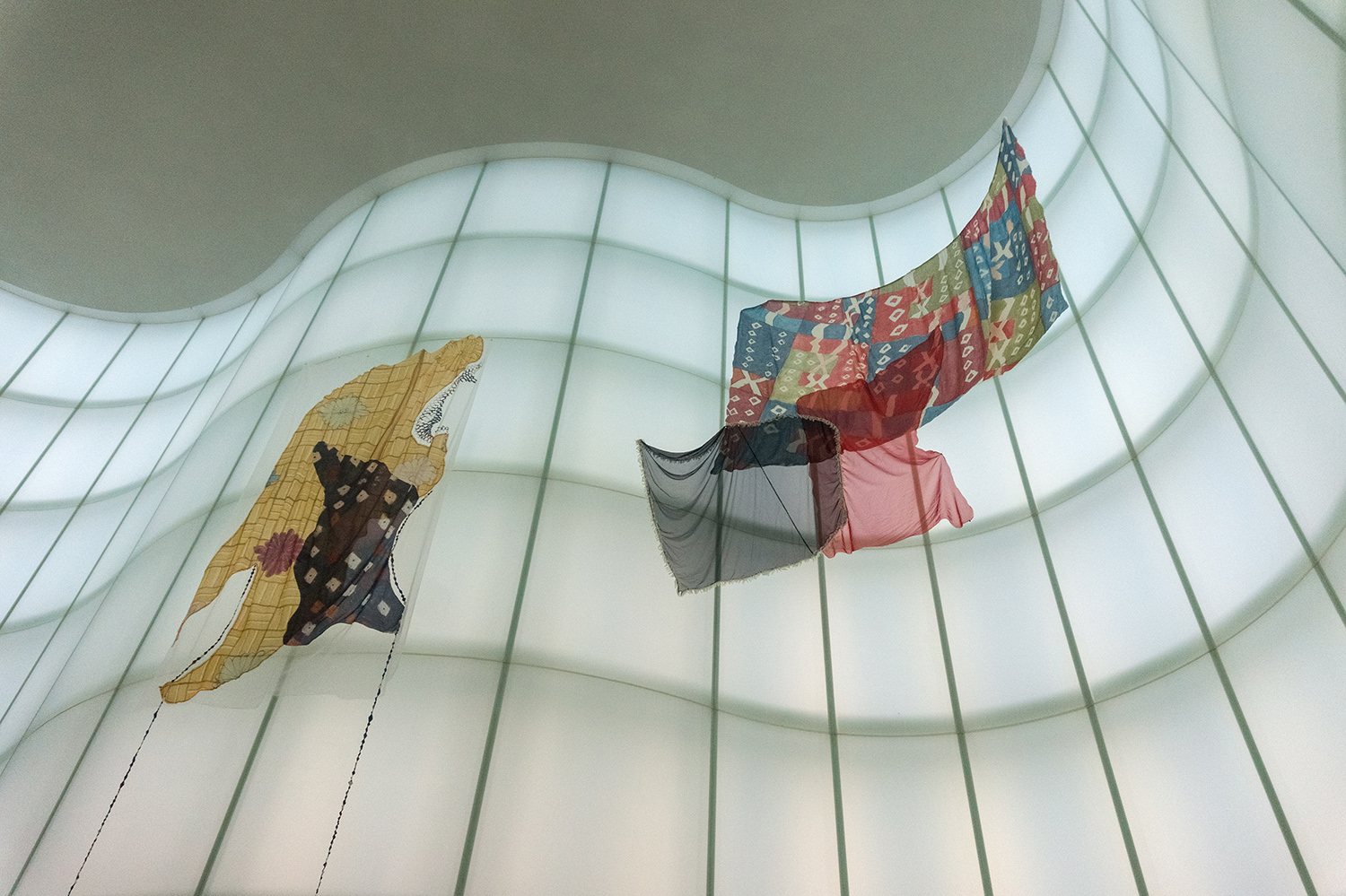
Luce dietro tracce incompiute
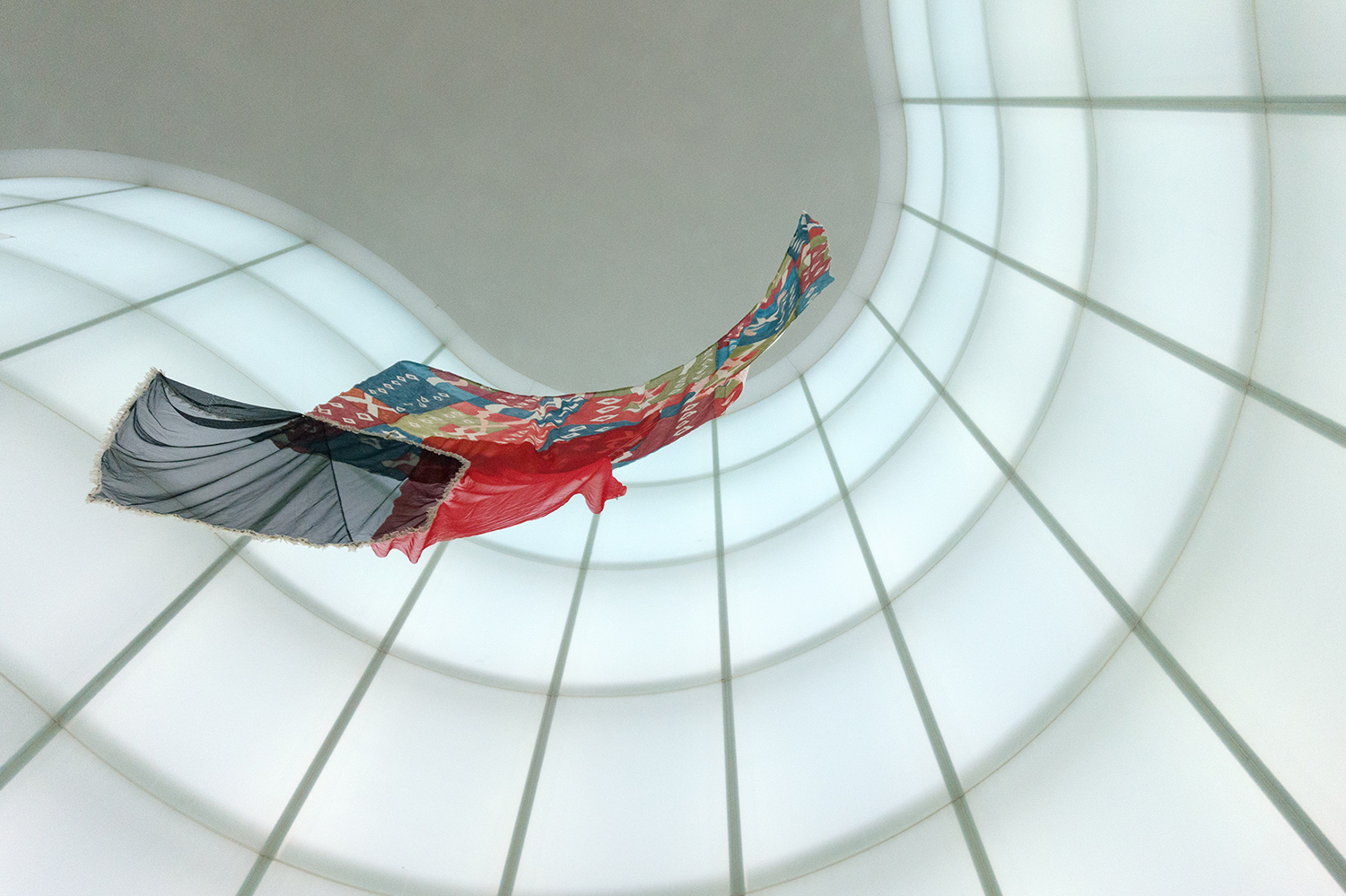
Luce dietro tracce incompiute
video NABA - Workshop Mudec
TEXTILE TEAM: Salvatore Averzano, Francesca Bricchi, Martina Camillo, Camilla Bertoni
STUDENTS: Ren Yingjun, Shen Yuchu, Anna Rosa Confuorti, Noemi Gennarino, Kübra Golak, Eda Polat
Roman Rubbish
August 4, 2022 – Januari 21, 2023 - curated by Nancy Rosen
Bloomberg SPACE, London, UK
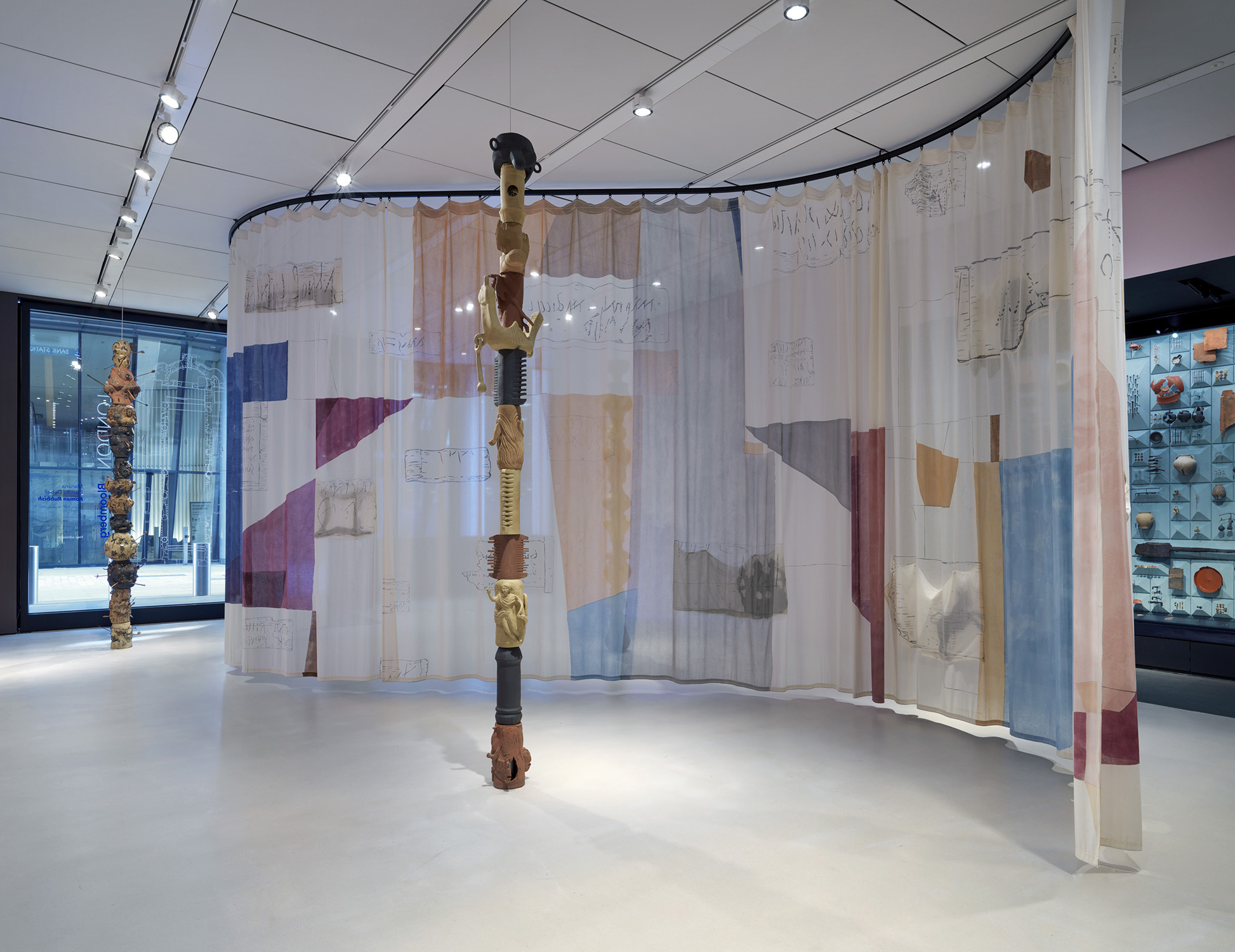
Exhibition view of Roman Rubbish, Bloomberg SPACE, London. 2022
Photo: Marcus Leith
Roman Rubbish is an intricately-detailed, extensively-researched composition, inspired by the 14,000 Roman artefacts discovered on the site of Bloomberg’s European headquarters during the 2012 – 2014 archaeological excavations. The installation comprises of towering pillars of ceramic sculptures, an elegant textile curtain and a wax feature wall with delicate inscriptions.
Roman Rubbish uses repetition and variation, allowing a narrative to emerge: a short story centred around the items found on the site, including ceramic vessels, combs, amulets and other personal objects. Deball is interested in how these objects, once discarded by their Roman owners, have been rediscovered perfectly preserved centuries later. Deball assembles oversized ceramic representations of these objects into columns, standing at over three metres tall. Showcased together, these unique yet similar artefacts highlight the vast variety of objects left behind by the City of London’s predecessors.
Visitors are able to explore other oversized representations of the artefacts suspended in pockets, sewn into a delicate textile curtain. Weaving between the installation’s ceramic columns, the curtain is hand-painted with images of wooden writing tablets found on the Bloomberg excavation site. The curtain leads to a monolithic wax wall, echoing the materials used in Roman writing tablets, delicately inscribed with descriptions of archaeological artefacts in the Bloomberg collection.
The Mexican artist’s new exhibition uses Roman detritus to suggest that we can tell more about a society by what it throws out than the culture it preserves.
In her installation, Roman Rubbish, three towers of stacked ceramics suggest ways that our understanding of the worth and meaning of objects can change. In one, amorphous ceramics have been occasionally burnished with metallic glaze and are stuck through with a hotchpotch of things that can easily fall to the floor, including coins, pins and dice. Another column puts the business of preservation at the centre, carefully recreating pots with breakages and all. The final ceramic work enlarges tiny amulets – “a phallus on one side, a vagina on the other” – as well as toothless combs, suggesting how their significance has grown.
A gauzy curtain connects the works, painted with scripts from the tablets and with further interpretations of artefacts concealed in pockets to make teasing silhouettes: uncertain shadows cast by the elusive past. One clearly recognisable element is old shoe soles; a reminder, perhaps, to consider our own footprint. “Ancient rubbish was sustainable because it’s organic, but our rubbish now is much harder to hide and we produce much more,” reflects Castillo Deball. “The show asks us to think about the present and future relationship we have with objects: what we consider important, what we put in museums and what we throw away.”
Quotes from Skye Sherwin, Life in litter: Mariana Castillo Deball’s Roman Rubbish

Column of Conglomerates, 2022.
ceramic with glazed details, 50 x 50 x 361cm. Exhibition view of Roman Rubbish, Bloomberg SPACE, London. 2022
Photo: Marcus Leith

Detail of Column of Conglomerates, 2022.
ceramic with glazed details, 50 x 50 x 361cm. View in the exhibition Roman Rubbish, Bloomberg SPACE, London. 2022
Photo: Marcus Leith

Exhibition view of Roman Rubbish, Bloomberg SPACE, London. 2022
Photo: Marcus Leith
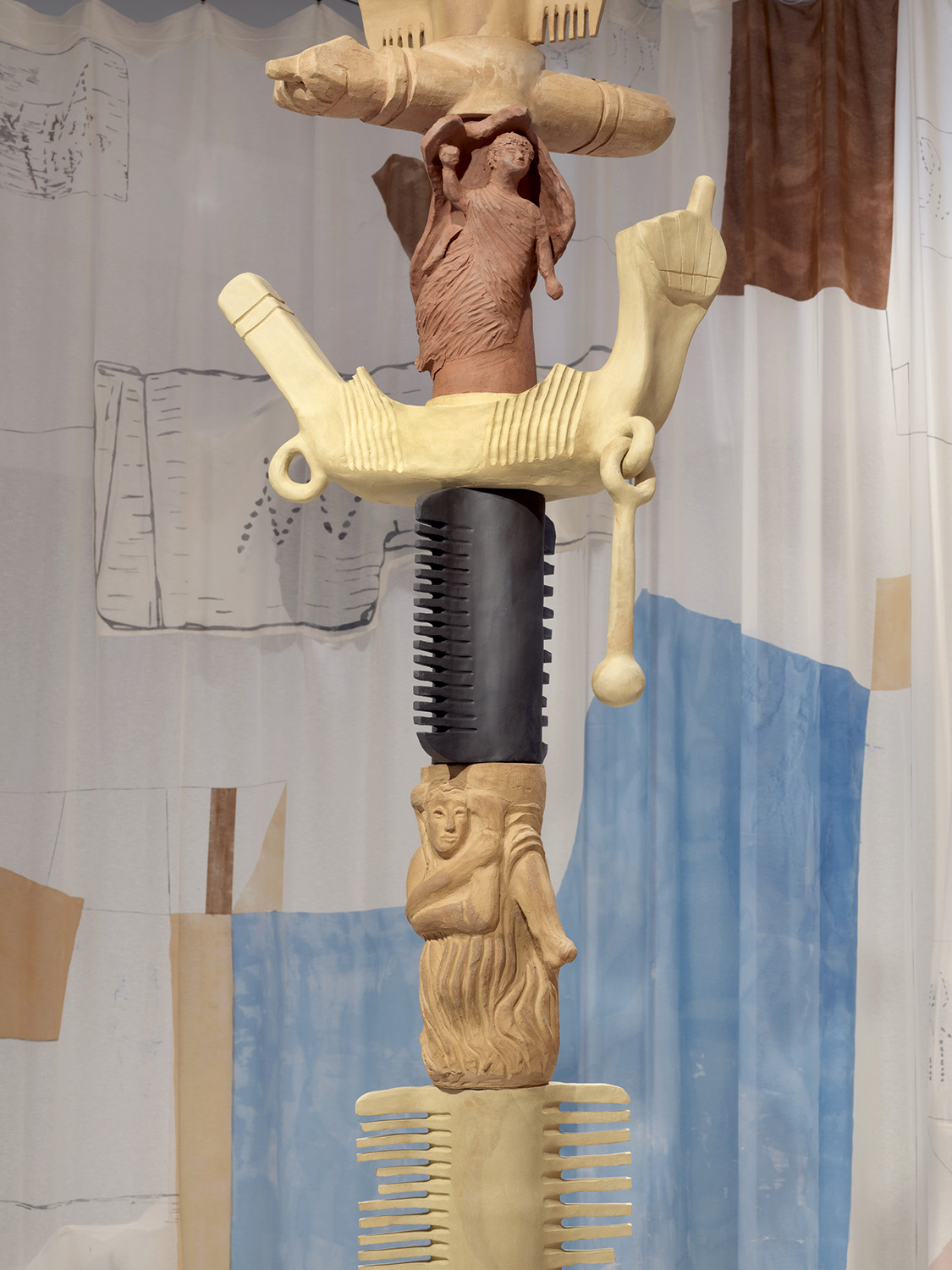
Detail of Column of Plenty, 2022.
ceramic, 65 x 65 x 370cm. View in the exhibition Roman Rubbish, Bloomberg SPACE, London. 2022
Photo: Marcus Leith
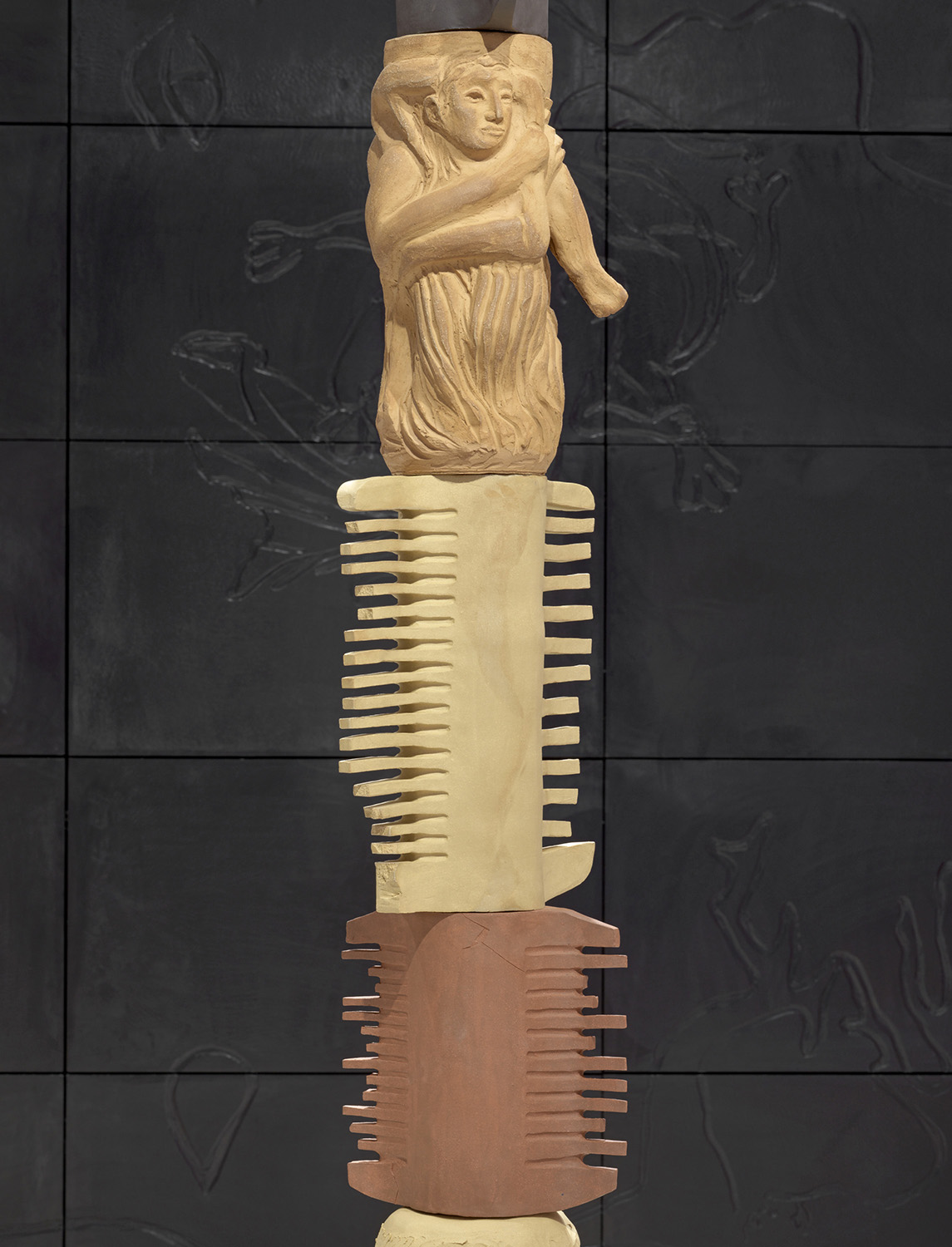
Detail of Column of Plenty, 2022.
ceramic, 65 x 65 x 370cm. View in the exhibition Roman Rubbish, Bloomberg SPACE, London. 2022
Photo: Marcus Leith
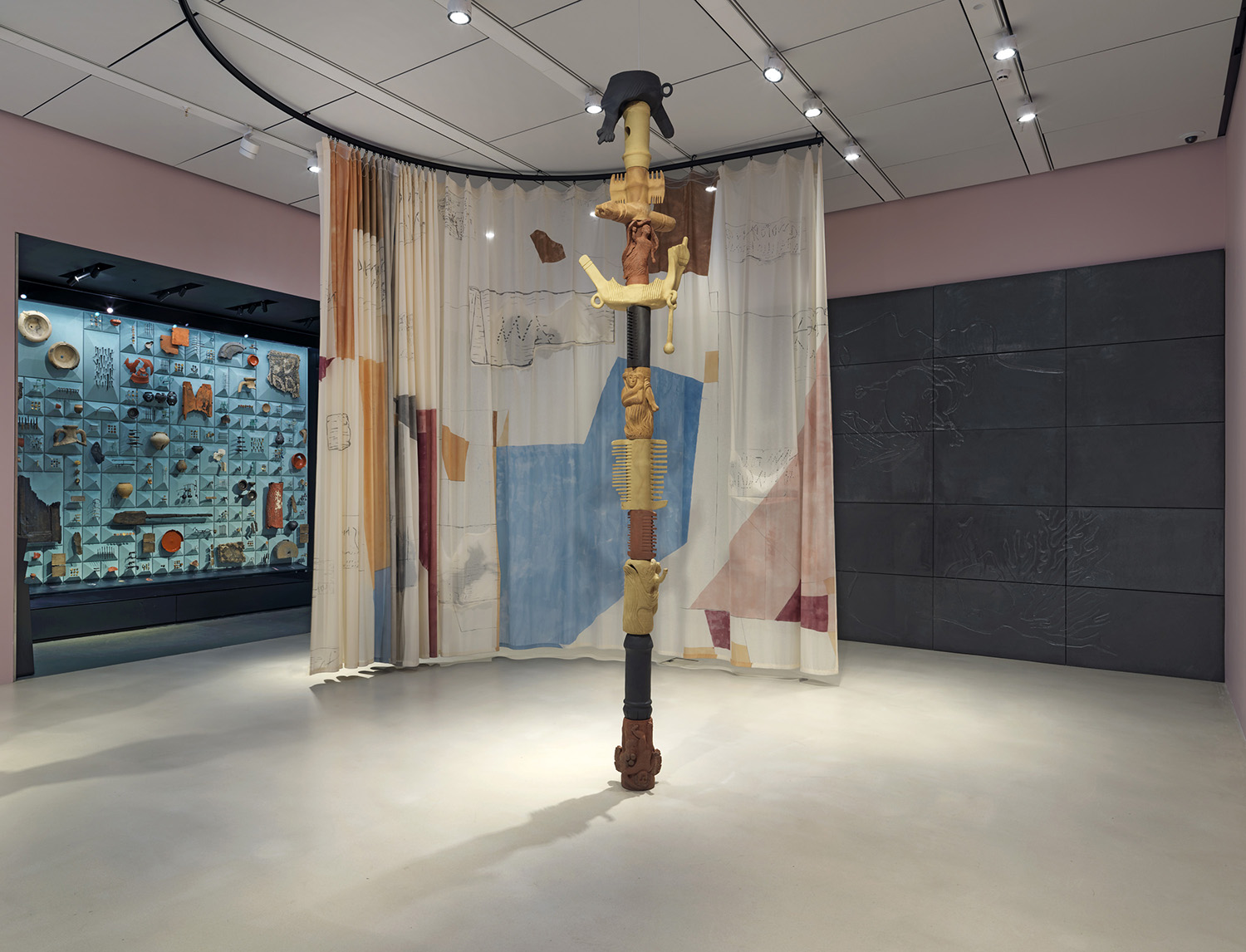
Column of Plenty, 2022.
ceramic, 65 x 65 x 370cm. Exhibition view of Roman Rubbish, Bloomberg SPACE, London. 2022
Photo: Marcus Leith
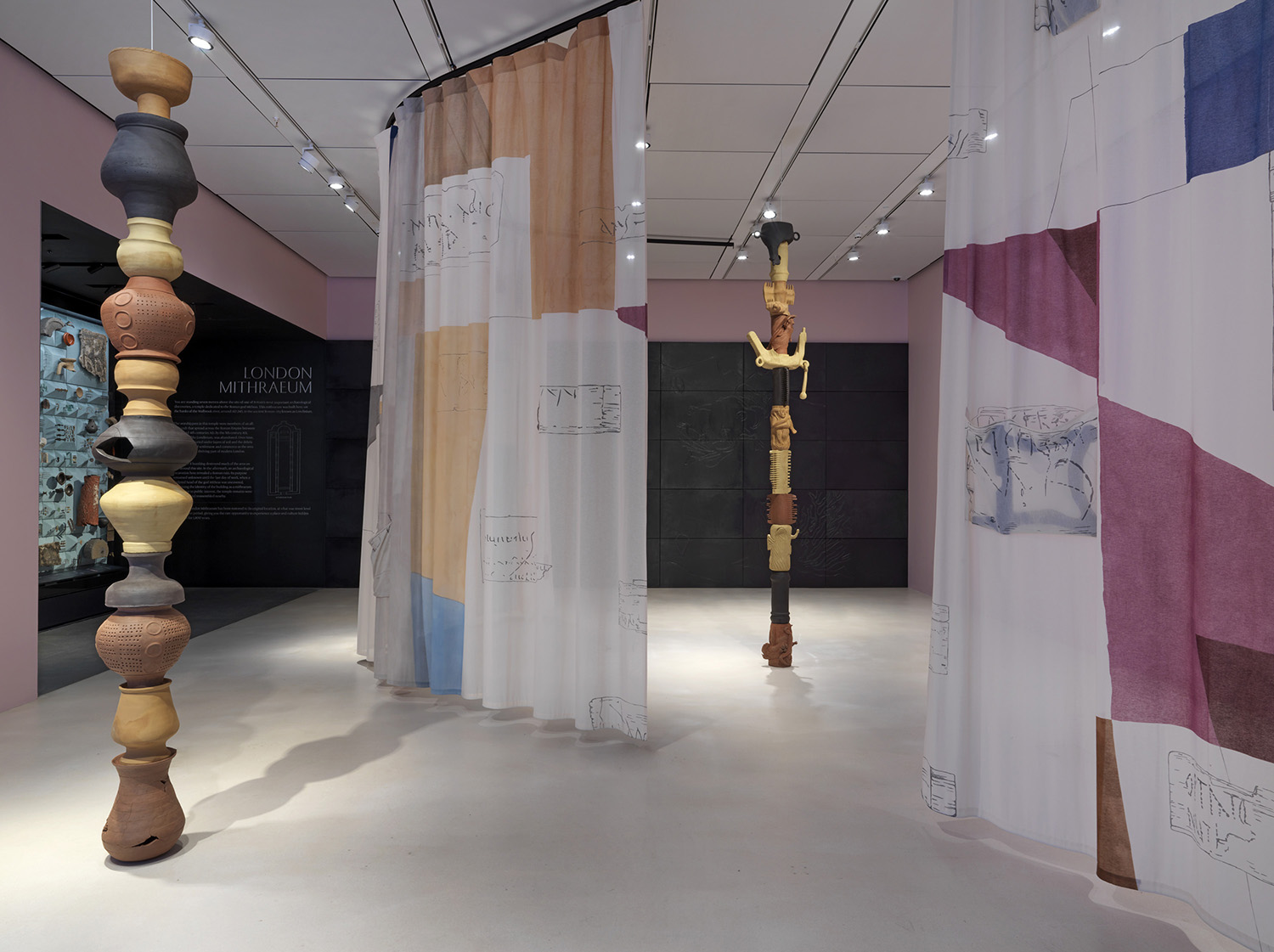
Exhibition view of Roman Rubbish, Bloomberg SPACE, London. 2022
Photo: Marcus Leith
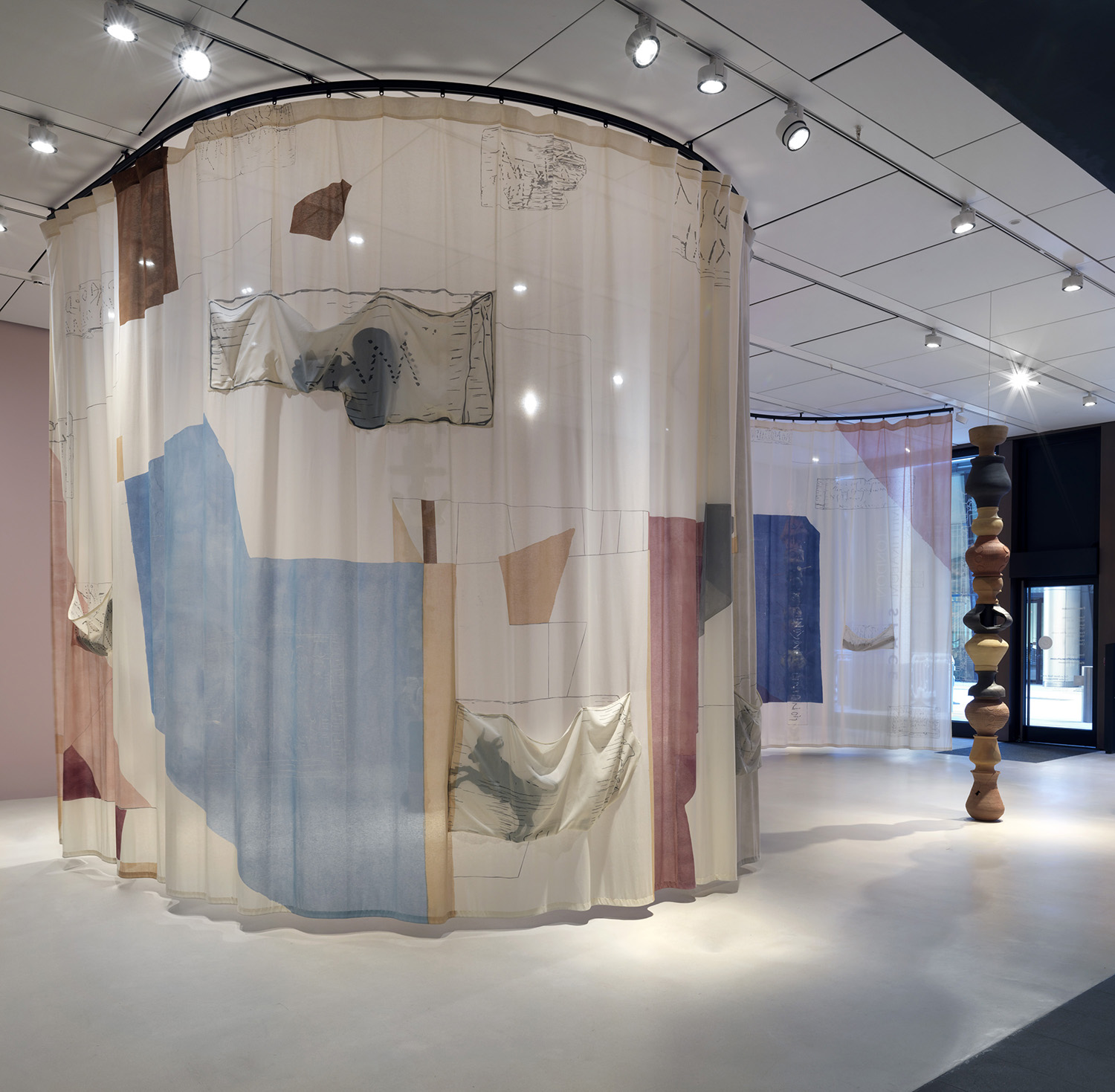
Rumour, as the future taste, hand painted cotton fabric, sewn on pockets with wooden silhouette inserts, 420cm ⨉ 2000cm, Bloomberg SPACE, London. 2022
Photo: Marcus Leith
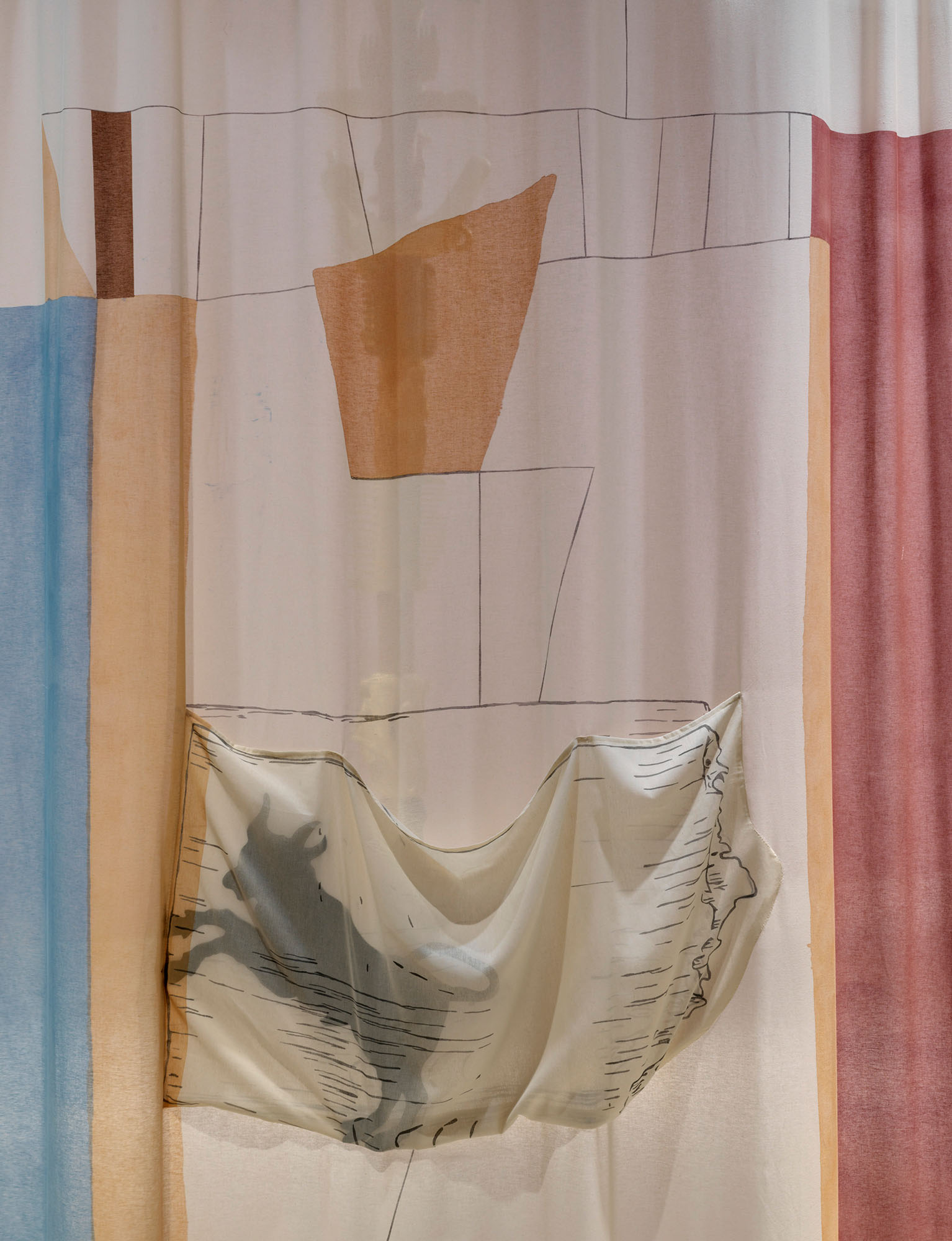
Detail of Rumour, as the future taste, hand painted cotton fabric, sewn on pockets with wooden silhouette inserts, 420cm ⨉ 2000cm, Bloomberg SPACE, London. 2022
Photo: Marcus Leith
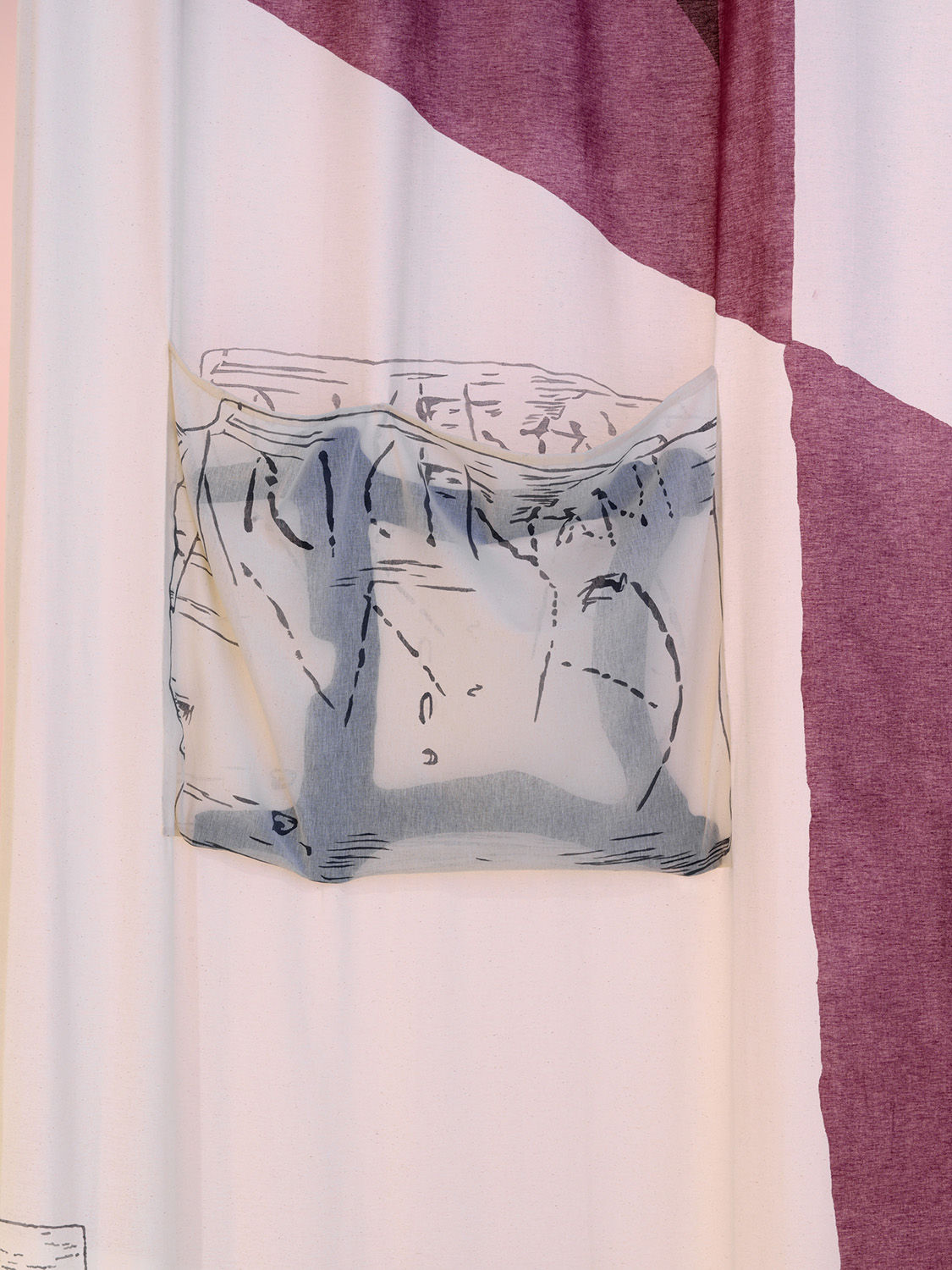
Detail of Rumour, as the future taste, Bloomberg SPACE, London. 2022
Photo: Marcus Leith
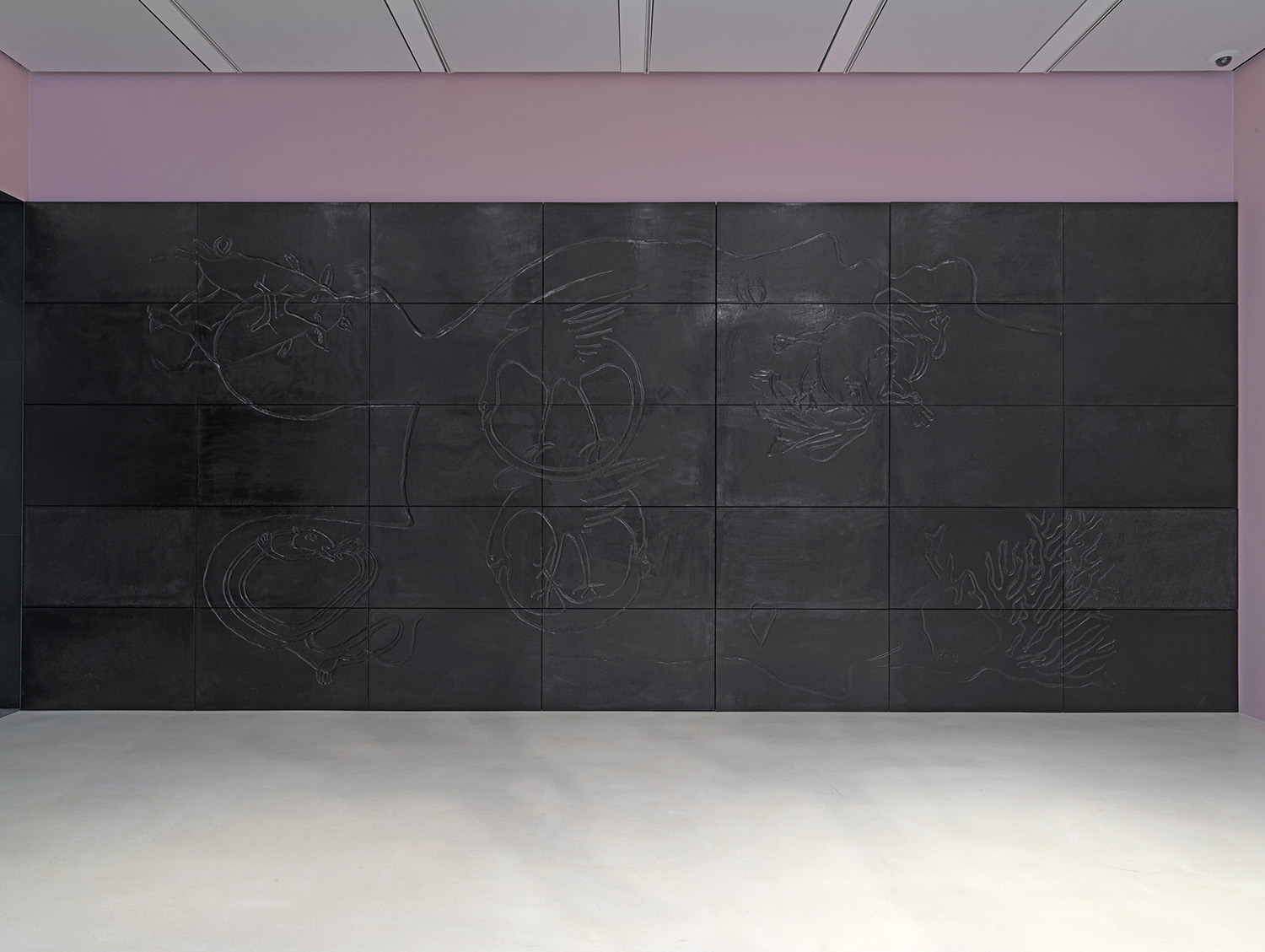
Dense silence swallows the dark black, 2022.
35 wax tiles with black pigment and carved drawing. 353cm ⨉ 845cm. Exhibition view of Roman Rubbish, Bloomberg SPACE, London. 2022
Photo: Marcus Leith
The Roman writing tablets have also inspired a monumental installation, a grid of black wax panels covering the gallery’s end wall into which Castillo Deball has inscribed a fantastical image featuring the profile of a Janus-like figure with two heads, a snake and birds eating their own tails alongside other animals and a bull being slain by Mithras. “Everything else in the exhibition is colourful and playful, so I thought it would be interesting to have a very dark work as a backdrop,” she says. “The image is from a drawing I made in 2011 for a project at the Venice Biennale called The Where I Am Is Vanishing, which was about the story of the Codex Borgia, a pre-Colombian pictorial manuscript from central Mexico that ended up in the Vatican Library. Some of the imagery came from the Warburg Institute, where there is a panel of Aby Warburg’s Mnemosyne Atlas that is dedicated to Mithras. One of these images by chance ended up in my drawing. I didn’t know who Mithras was until I started working on the Roman Rubbish exhibition. Returning to this drawing was probably a work of my unconscious, because I already knew that Mithras was there, but I somehow forgot about him.
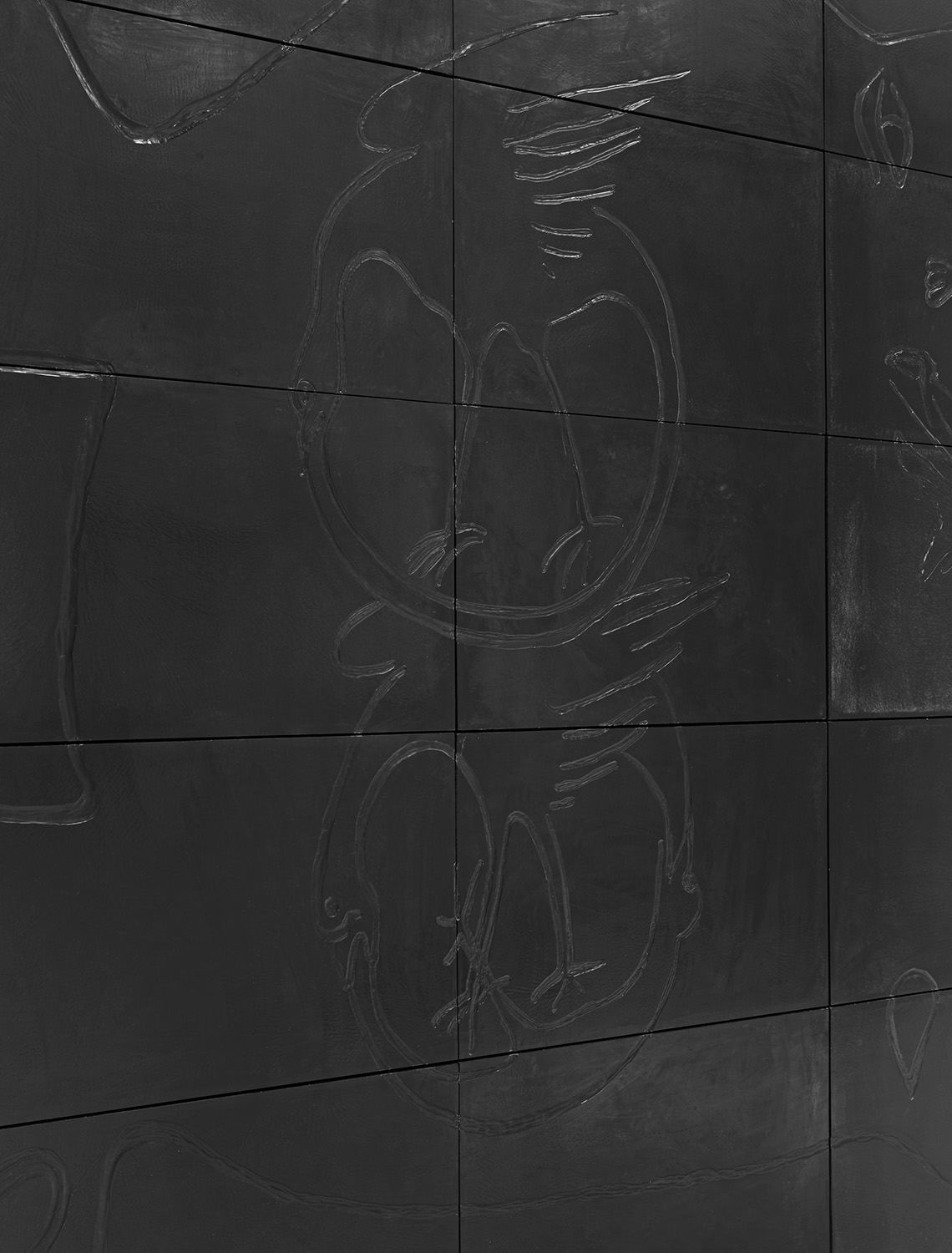
Detail: Dense silence swallows the dark black, 2022.
35 wax tiles with black pigment and carved drawing. 353cm ⨉ 845cm. Exhibition view of Roman Rubbish, Bloomberg SPACE, London. 2022
Photo: Marcus Leith
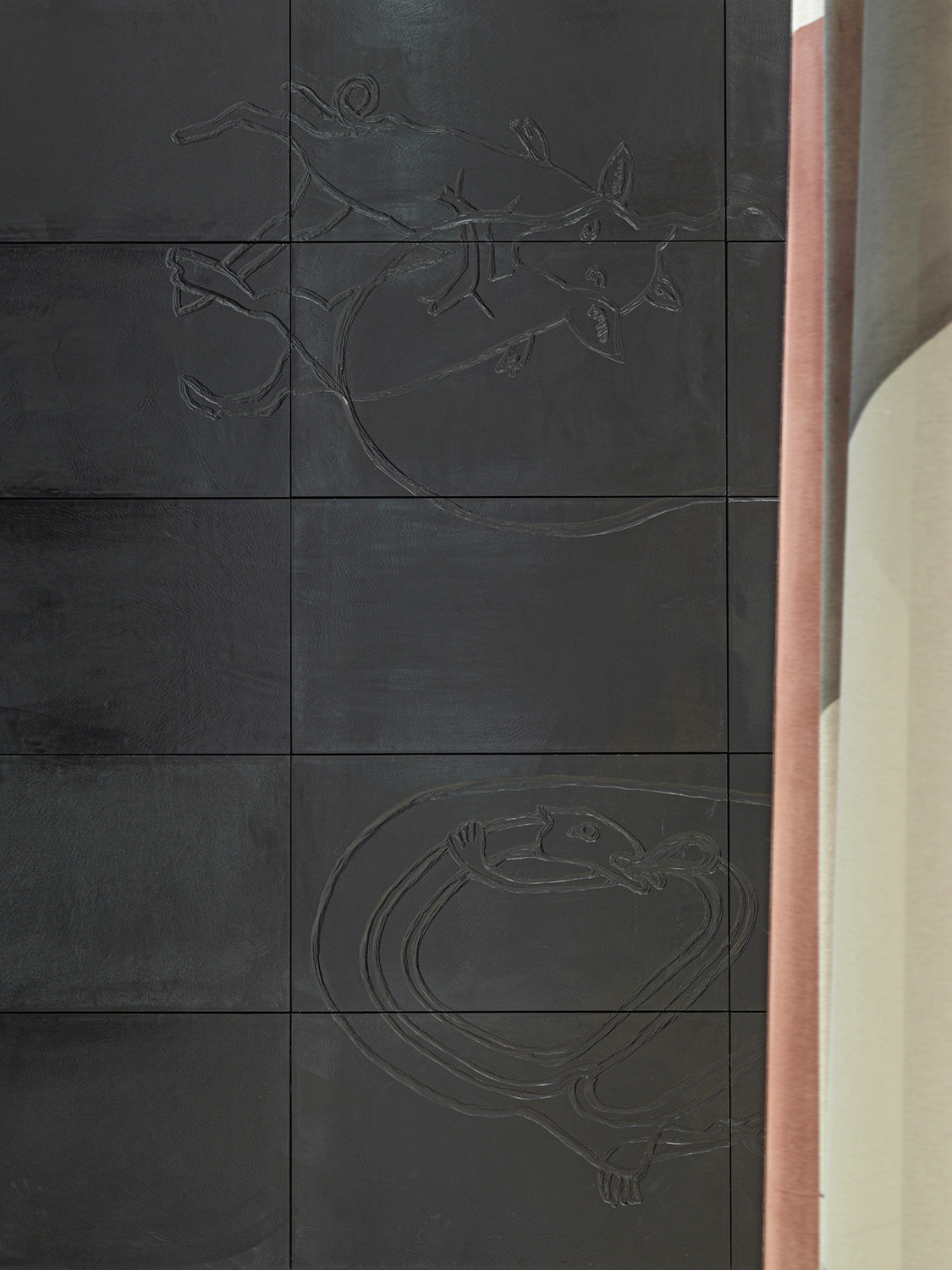
Detail: Dense silence swallows the dark black, 2022.
35 wax tiles with black pigment and carved drawing. 353cm ⨉ 845cm. Exhibition view of Roman Rubbish, Bloomberg SPACE, London. 2022
Photo: Marcus Leith
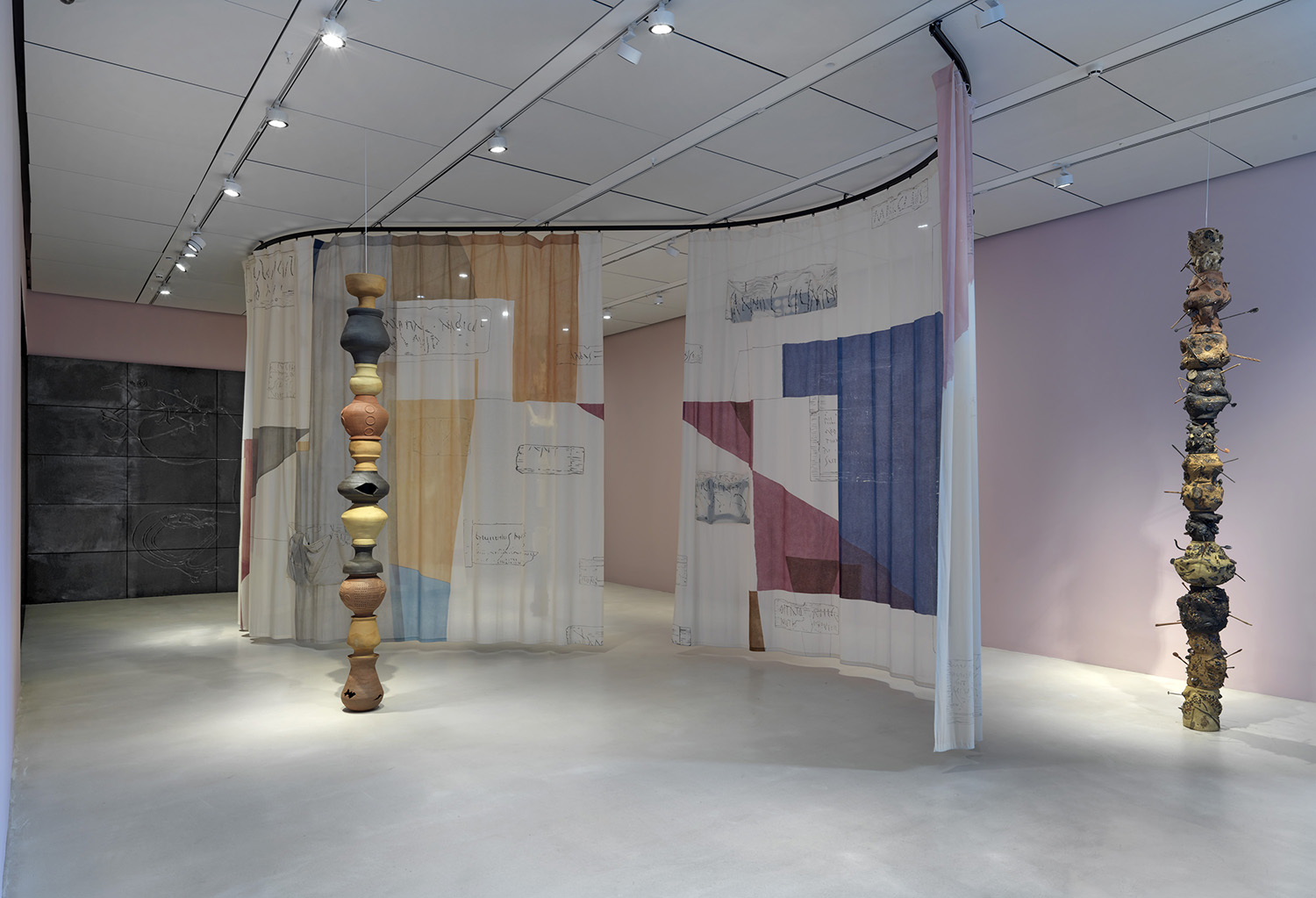
Exhibition view of Roman Rubbish, Bloomberg SPACE, London. 2022
Photo: Marcus Leith

Detail of Column of Vessels, 2022.
ceramic, 50 x 50 x 333cm. View in the exhibition Roman Rubbish, Bloomberg SPACE, London. 2022
Photo: Marcus Leith
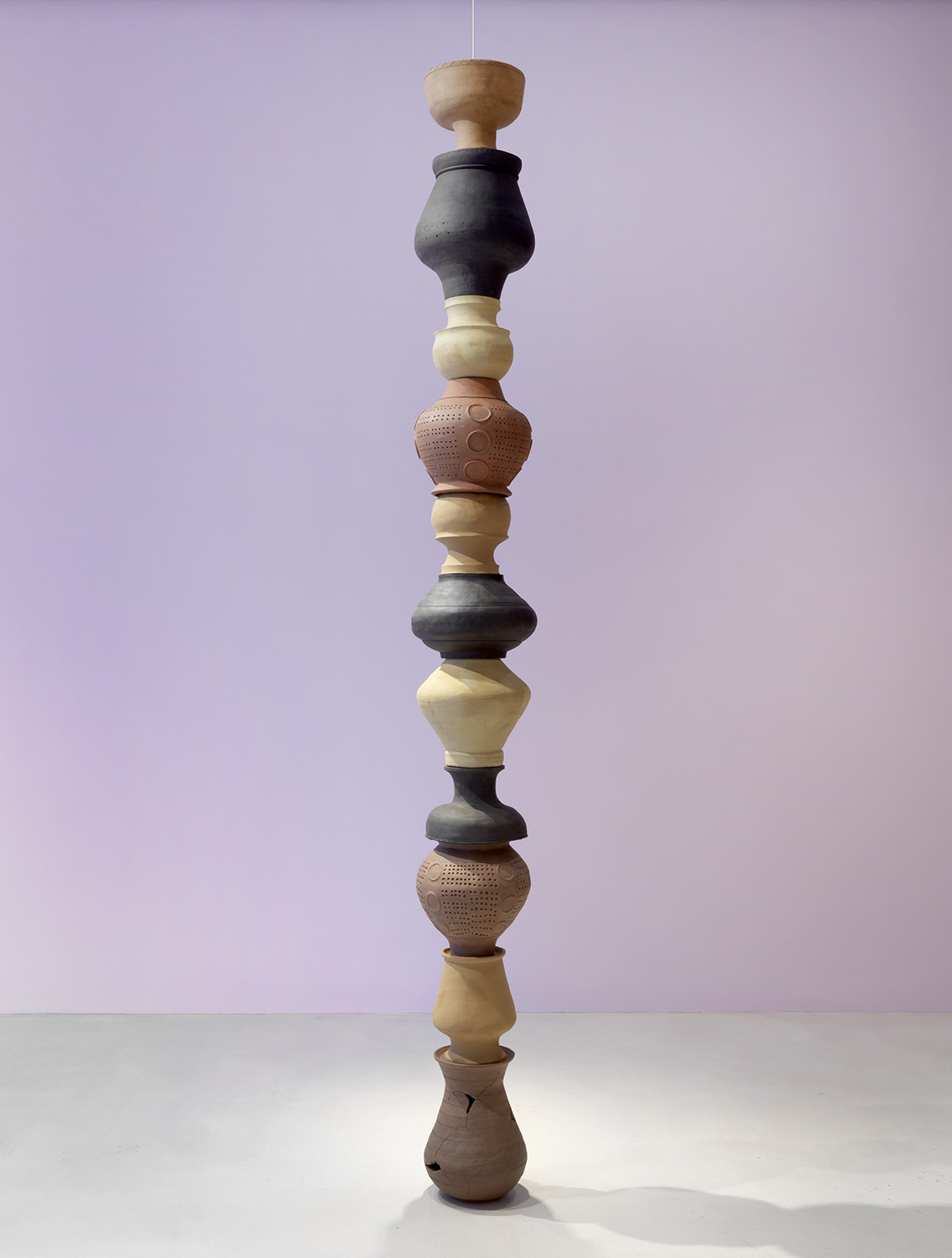
Column of Vessels, 2022.
ceramic, 50 x 50 x 333cm. Exhibition view of Roman Rubbish, Bloomberg SPACE, London. 2022
Photo: Marcus Leith
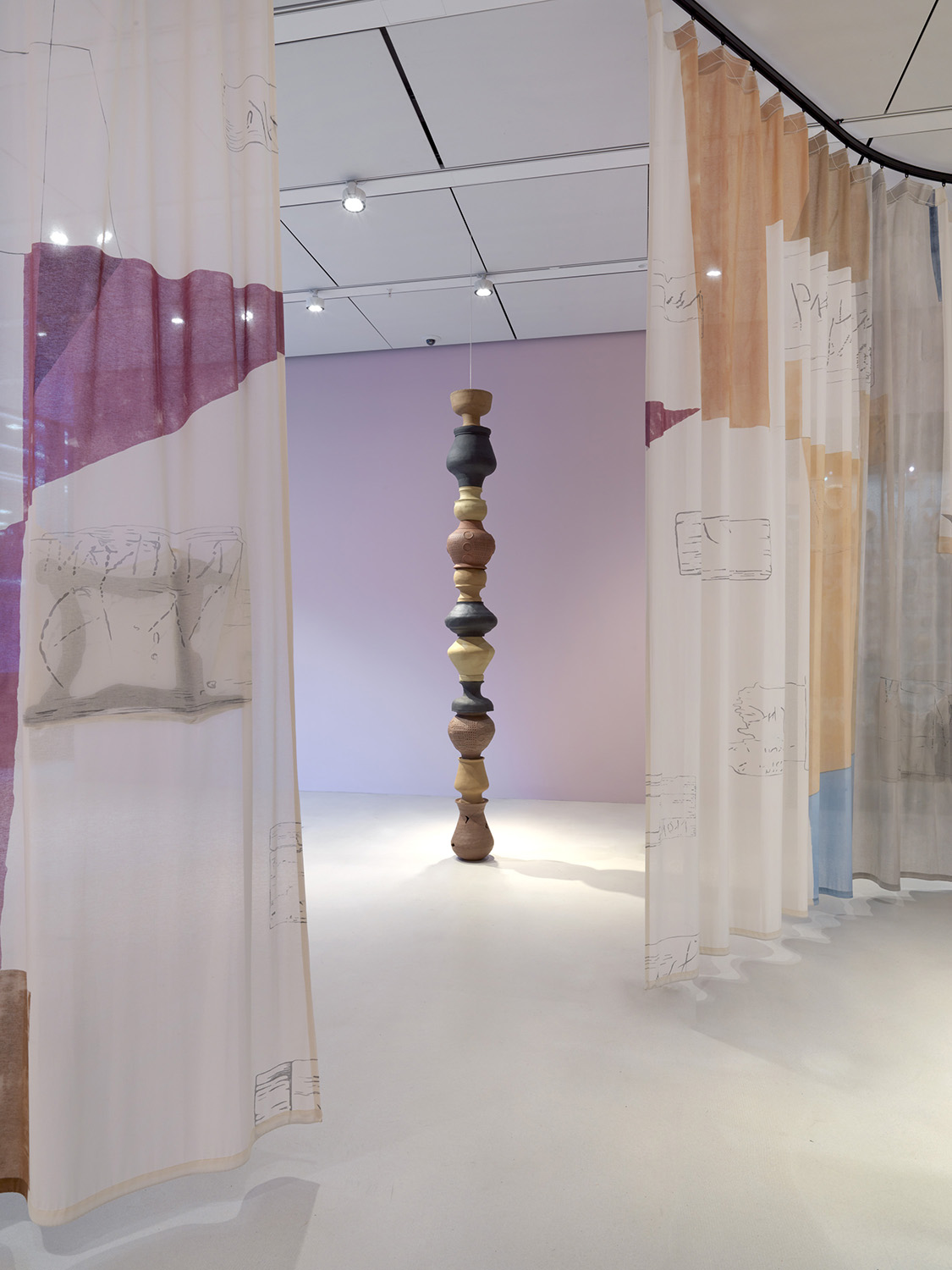
Exhibition view of Roman Rubbish, Bloomberg SPACE, London. 2022
Photo: Marcus Leith